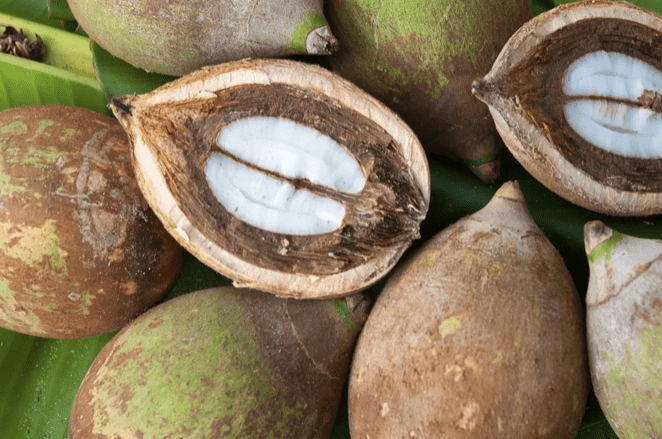Our oils and fats are...
Our oils and fats
Oils and fats are, so to speak, the basis of all cosmetics. They ensure that the skin is cared for, the skin remains soft and the necessary essential fatty acids can be absorbed by the skin to fulfil important skin functions. Our oils and fats from NatureCastle are always of an incredibly high quality and almost always come from organic cultivation and are almost without exception all cold-pressed. This ensures that the oils and fats are free from pesticides and artificial fertilisers.
The cold pressing ensures that all valuable ingredients are preserved. Our oils and fats care for your skin and ensure a beautiful complexion of the skin!
Rich but sustainable
Our oils and fats are very rich raw materials that are extracted directly from the plant. The techniques used to extract these oils are mostly cold pressing. However, there is also a technique called Co2 extraction. This technique is used to extract hydrophobic, Greek for water-hating, substances. These are mostly oils and fats, but can also be essential oils, which chemically belong to a different class of substances. This technique is often used for small seeds such as chia or amaranth, as well as conventional berry seeds, since the oil in these seeds is very low. The oil or fat is extracted by supercritical Co2.
In addition to the extraction methods, which are designed to get as much of the plant into the oil as possible, the cultivation is also vital. At NatureCastle, we focus exclusively on sustainable and fair cultivation. It is important to us that the plants are grown in an environment that can continue to exist sustainably in the future and that the people involved in harvesting and processing are not exploited. In this respect, we rely heavily on permaculture and reforestation. The plants are thus grown in a great environment and our products are morally justifiable in every respect and ensure a meaningful future for us and our environment.
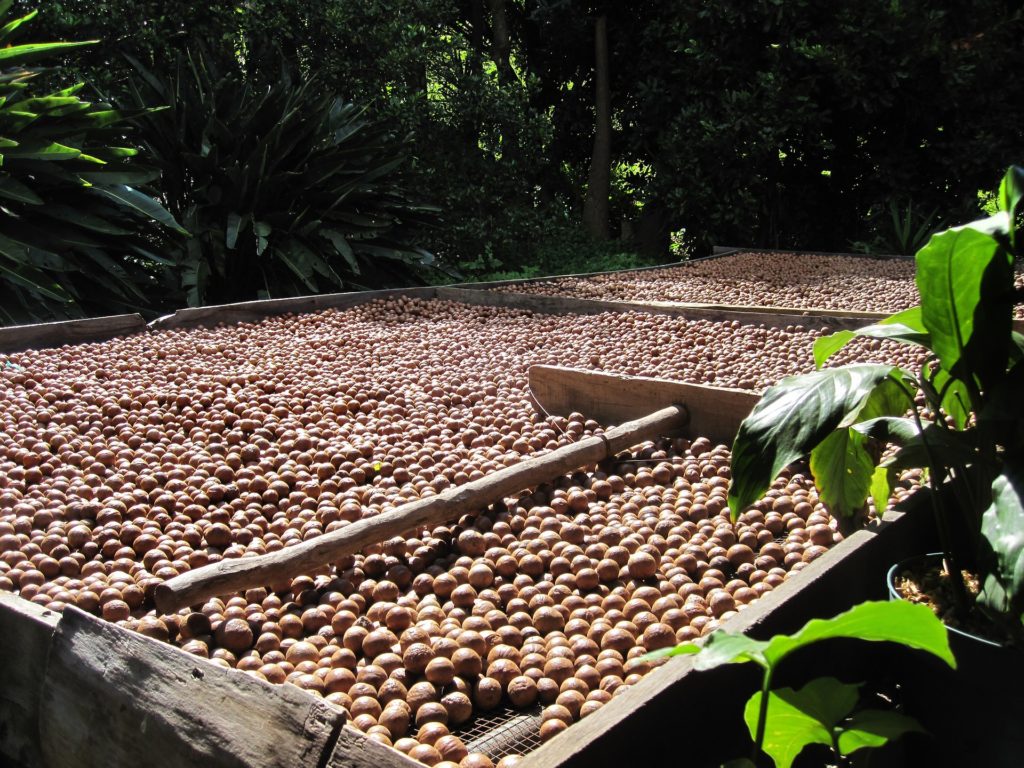
Gallery of oils and fats


Evening primrose oil
The evening primrose, originally from North America, was able to settle well in Europe and is widespread today. The oil extracted from the black seeds is very valuable, as the extraction is usually very complex and must be obtained by cold pressing or modern CO2 extraction. The oil consists of more than 75% unsaturated linoleic acid, which is very healthy for the skin and boosts skin cell renewal. Some studies say that evening primrose oil is a woman’s oil, as it helps to support a woman’s hormonal balance and to alleviate or even completely eliminate many possible complaints caused by unstable homeostasis. Since this oil contains many unsaturated fatty acids and has virtually no antioxidants itself, it is very susceptible to becoming rancid and therefore needs to be processed quickly and combined well with other ingredients rich in tocopherols. The oil is truly a blessing for your skin, perhaps the next time you walk past the yellow flower you will realise the value hidden within.
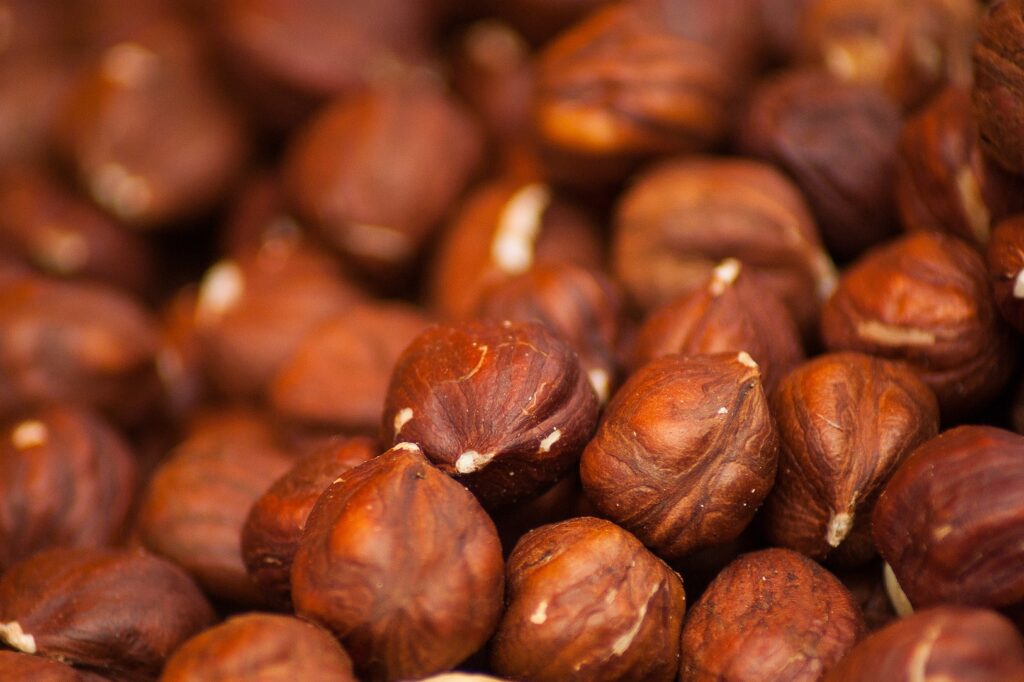
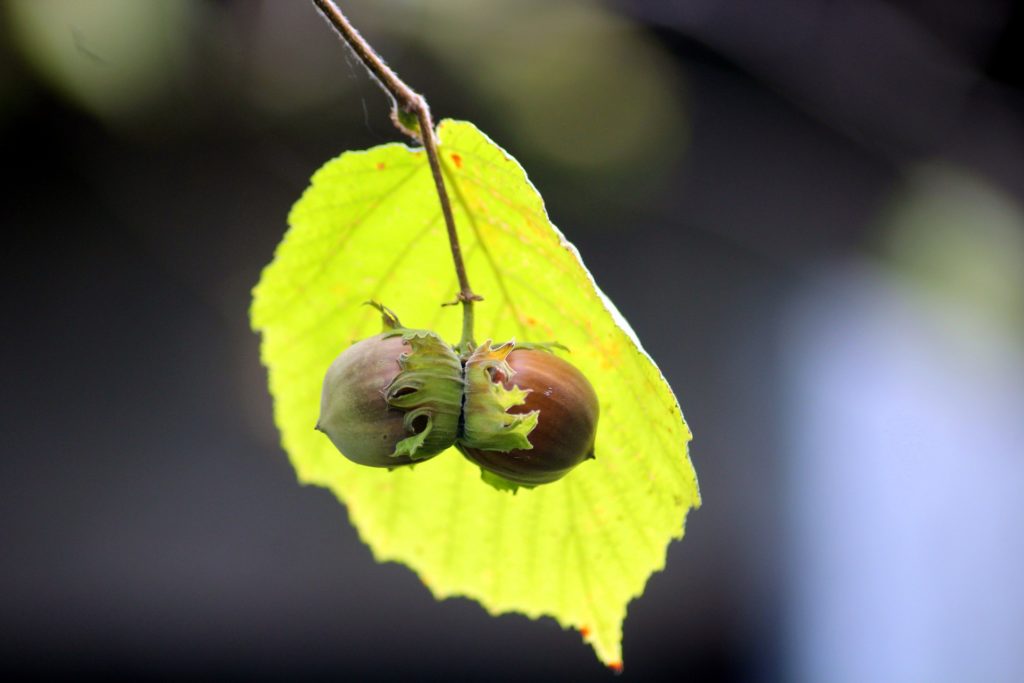
Hazelnut oil
The hazelnut is a gift of nature from the forest edges of Europe.
The hazelnut bush, which can be found at the edge of almost every forest in Europe, has a lot to offer. The oil extracted from hazelnuts is rich in oleic acid, an unsaturated fatty acid that is very good for the skin. Besides its antioxidant properties, hazelnut oil can also form free radicals and thus prevent skin damage. It is rich in vitamin E and other trace elements such as provitamin B.
The oil is particularly suitable for dry and mature skin. It is quickly absorbed into the skin and strengthens it. It is also wound healing and anti-inflammatory.
It is not only yellow like gold, but a true miracle for your skin and envelops you with real nut power. Sometimes it is the inconspicuous things that give life a new meaning.
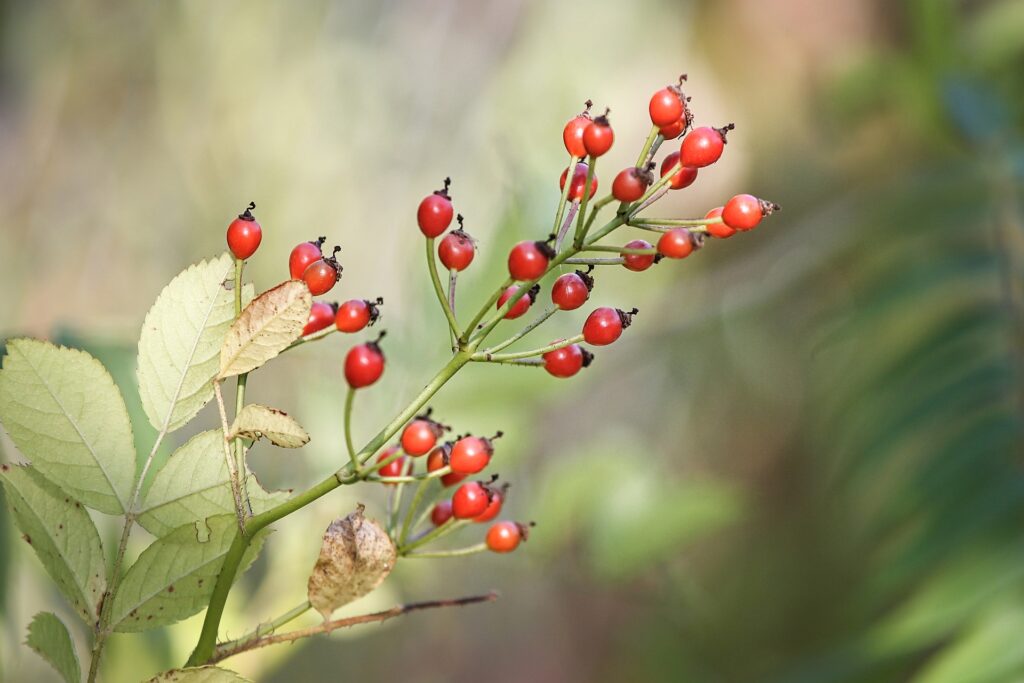

Wild Rose Oil
Wild rose oil, also known as rosehip seed oil is a very valuable and expensive oil extracted from the seeds of wild roses from all over the world. This oil is used in cosmetics for dry, sensitive as well as mature skin as it soothes irritation and protects the skin from moisture loss. In addition, this oil regenerates cells, leading to a healthy skin appearance. The most important component of this oil is all-trans retinoic acid, which is not as harmful to our health as other trans fatty acids, but is one of the most important components of this oil. It ensures healthy skin, constant renewal and counteracts cellular ageing. Every time you have liquid gold on your skin you are reminded of how kind nature has been to you.
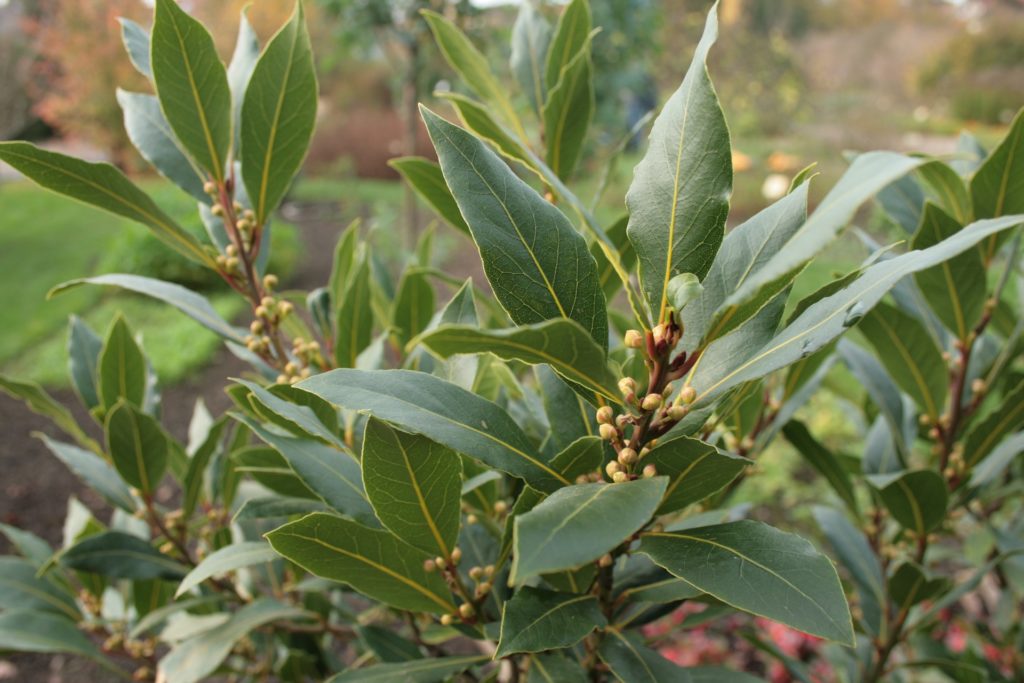

Laurel oil
The laurel bush, which originates from the Mediterranean, is an evergreen shrub that can grow up to 20 metres high. These benefits of this plant have been known for thousands of years and were widespread among the Greeks and the Romans.
Laurel oil is extracted from the black seeds of the laurel plant. This deep green oil smells tart and is very viscous. Laurel oil has a high content of unsaturated fatty acids and other valuable substances that help the skin to regenerate and strengthen. The laurel oil is well suited for dry, mature as well as oily skin. The aromatic compounds help to soothe the skin and prevent inflammation.
Known for thousands of years, laurel oil helps to strengthen and energise your skin and prevent wrinkles and blemishes.
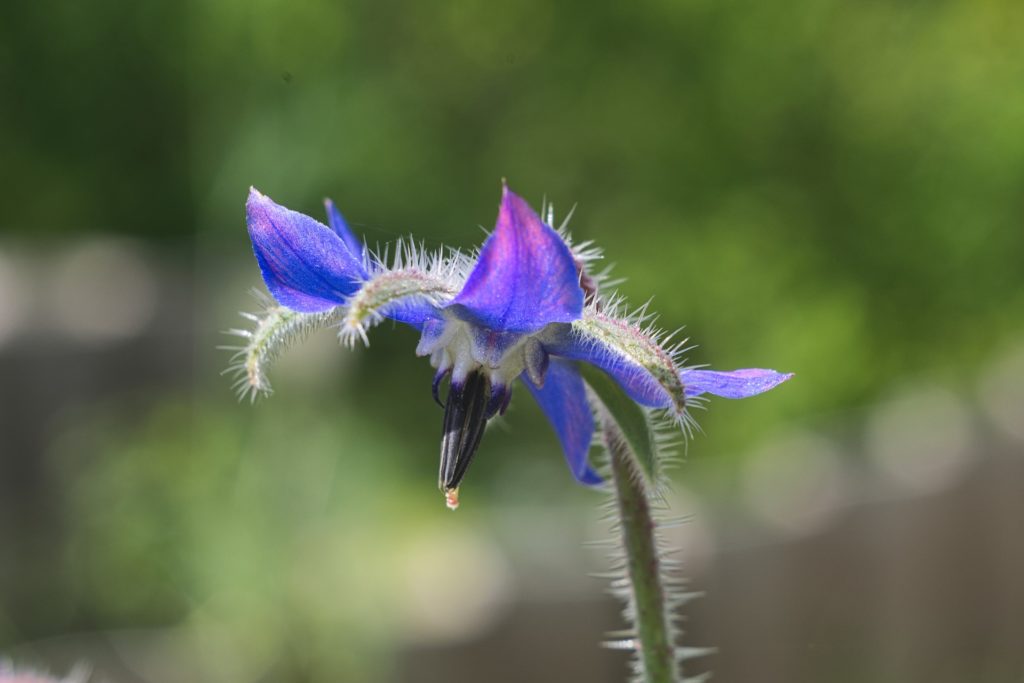

Borage oil
The borage plant, which has a beautiful blue-violet flower, gives one of the most valuable oils, which has its origin in Europe. This oil, extracted from the small black seeds, is the richest oil in the world in γ-linolenic acid and is therefore anti-inflammatory and soothing for the skin.
These γ-linolenic acids are essential fatty acids that cannot be produced by the body itself, but are vital for our health. This γ-linolenic acid is known to support important functions of the brain and to lower blood pressure.
For cosmetics, this oil is a wonderful active ingredient because it has no strong odour of its own and provides the skin with wonderful care and plenty of active ingredients.
The borage oil incorporated in our facial serum originates from the Mediterranean region and, due to the gentle cold pressing, is full of active ingredients that will pamper any skin.
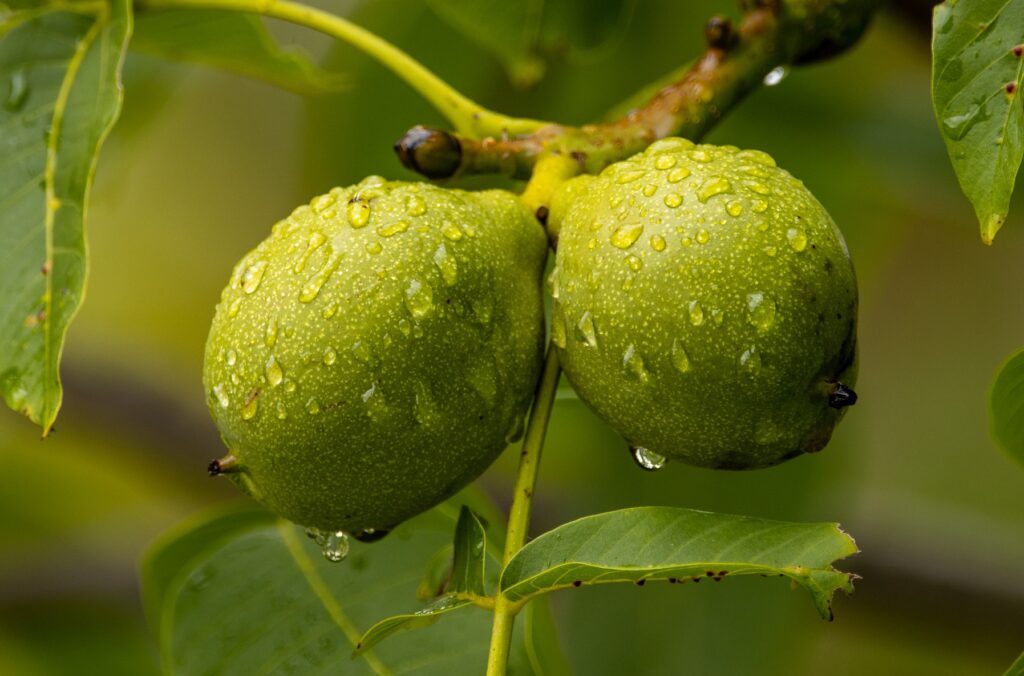
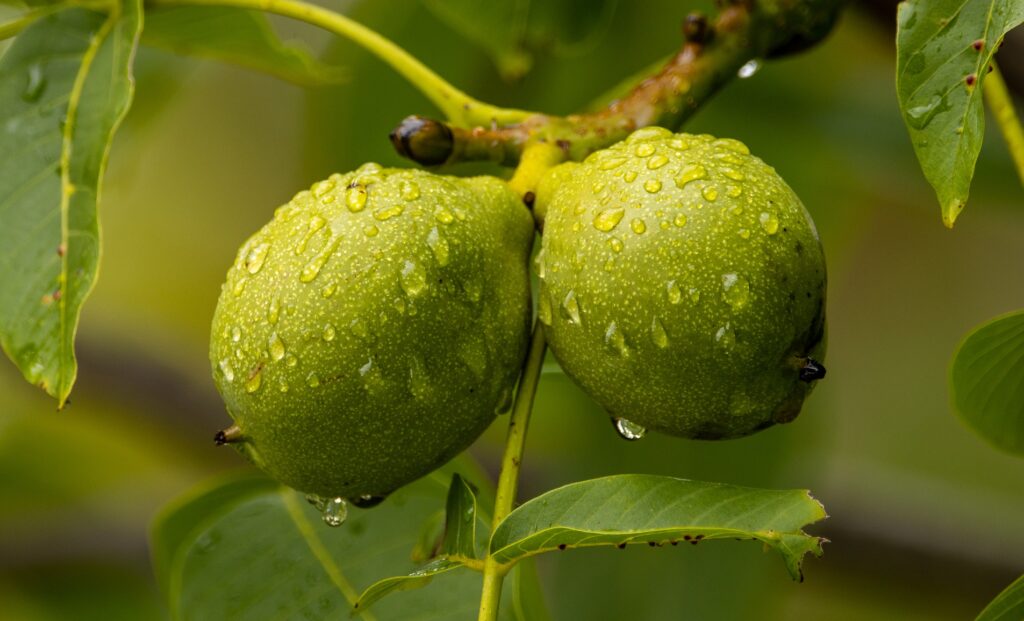
Walnut oil
The European walnut, which originates from the Middle East, gives a light yellow, very fragrant oil. The nuts, which are enclosed in a green shell when they are still unripe, have an incredibly high fat content of almost 60%. Compared to other nut oils, walnut oil is rich in linoleic acid, which is very good for our skin. The ratio of the acids is almost perfect and thus almost similar to human lipids. It is quickly absorbed into the skin, does not clog the pores and prevents unnecessary sebum build-up. This prevents pimples and blackheads from forming. Compared to many other oils, the oil contains many B vitamins, which would actually be polar and therefore water-soluble. This is made possible during pressing, whereby the vitamins get into the oil despite the hydrophilicity. The oil is rarely used in cosmetics because it degrades very quickly and must therefore always be used fresh or combined. This oil has a special gift for practically every skin type and should therefore always be included somewhere in one of their products.
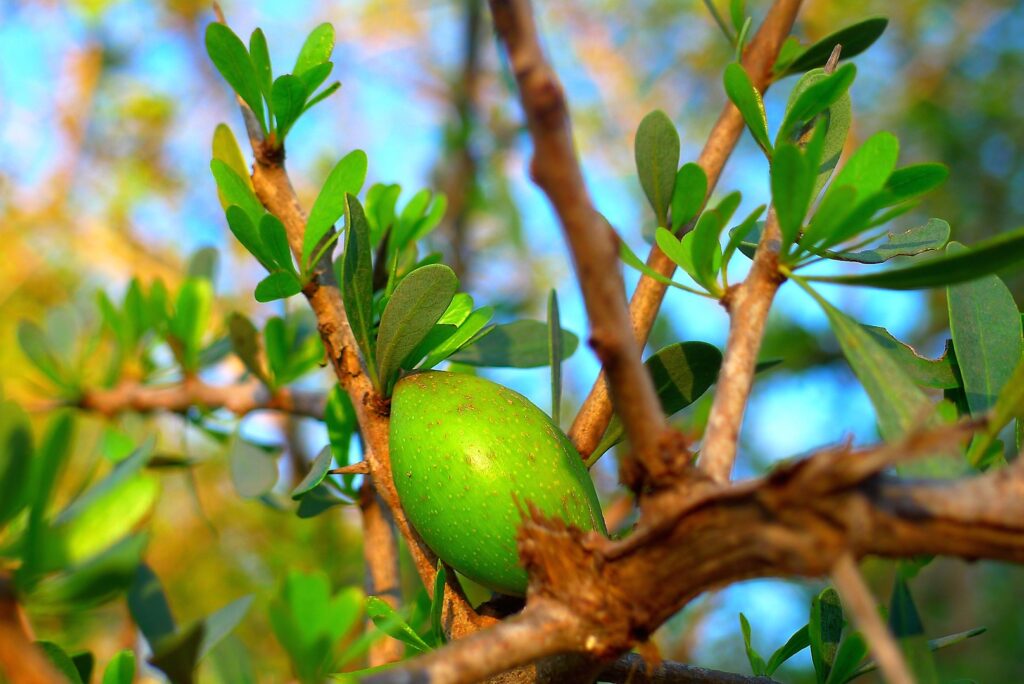

Argan oil
Argan oil, which comes from North Africa, especially Morocco, is a real treasure in cosmetics. The tree of the argan fruit grows up to 30 metres high and is very resistant to drought. This tree helps a lot against water loss and erosion in the Sahara belt. Argan oil is extracted from the yellow fruits of the argan tree. However, the oil is only extracted from fruits that have fallen to the ground, as the tree has many thorns. The only animal that dares to climb these trees is the goat.
The extraction of the oil is very laborious and the yield is very low, which explains the high price of the oil. Argan oil is very stable to oxidation, which is explained by the high vitamin E content. Argan oil has a very balanced fatty acid spectrum and cares for the skin wonderfully. Argan oil helps to strengthen the skin barrier and protect the skin from cell ageing and skin impurities such as pimples.
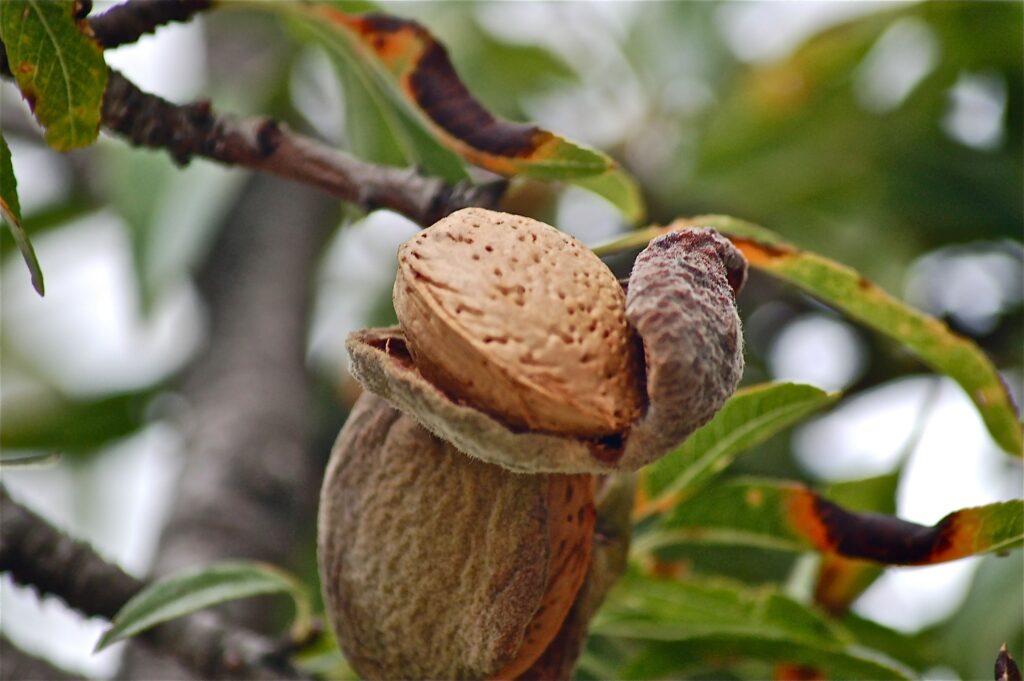

Almond oil
The almond plant, originally from Asia like many other plants, gives one of the most important oils for the cosmetics industry; the sought-after almond oil.
Almond oil is obtained from the sweet almond by cold pressing at best. The oil of the bitter almond is not suitable for cosmetics because it contains much more amygdalin compared to the conventional almond oil or other kernel oils such as that of the plum or apricot. This glycoside is transformed into toxic prussic acid by enzymatic cleavage.
Almond oil contains almost exclusively unsaturated fatty acids, especially oleic acid, and a high proportion of other substances beneficial to our skin. Due to its high skin compatibility, almond oil is used in many products. This ranges from baby care to skin care for allergy sufferers. Almond oil is a wonderful oil in cosmetics and can help your skin in many aspects. It helps absolutely every skin type to achieve a radiant complexion.
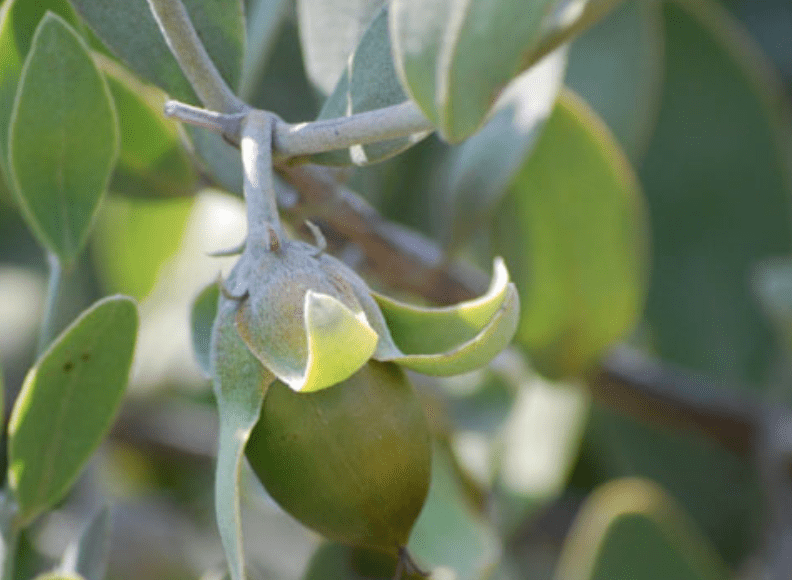
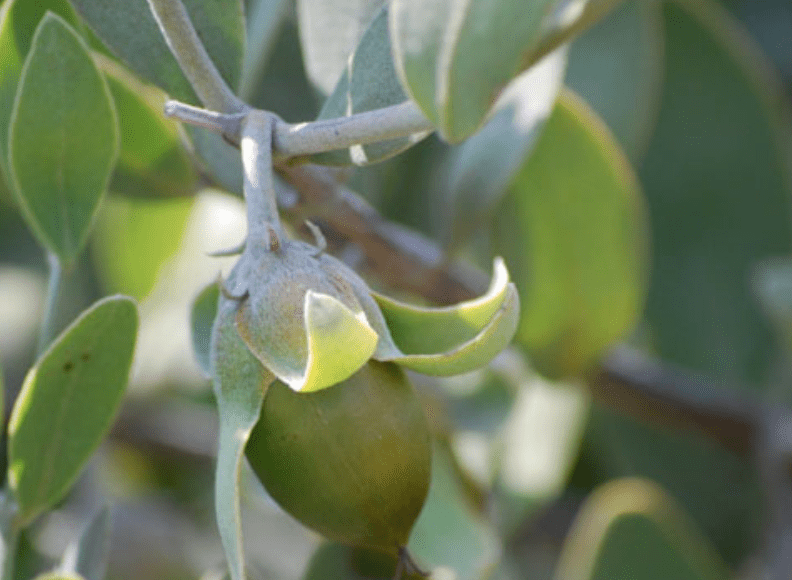
jojoba oil
Jojoba oil, a gift of nature, which the Aztecs already appreciated and called liquid gold.
Due to its chemical structure, jojoba oil is not an oil but a wax. Therefore, it is very similar to the sebum of the human skin and is excellent for cosmetics. This liquid wax feels very pleasant on the skin and is not greasy, as many oils are. Besides its special glycerine-free structure, jojoba is rich in gadoleic and erucic acids, which provide excellent skin care. Originating in North America, jojoba oil was first brought to Europe by the Spanish colonisers and already caused a great stir at that time. Today, this liquid wax is also cultivated in southern parts of America, as well as in Egypt, Jordan and Israel.
This oil is suitable for all skin types and can also be found in many anti-acne products thanks to its antibacterial properties.
This oil is wonderful for cosmetics and will also shine beautifully on your skin.
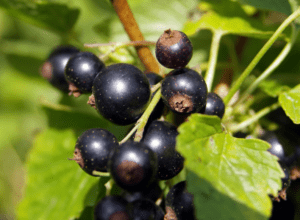
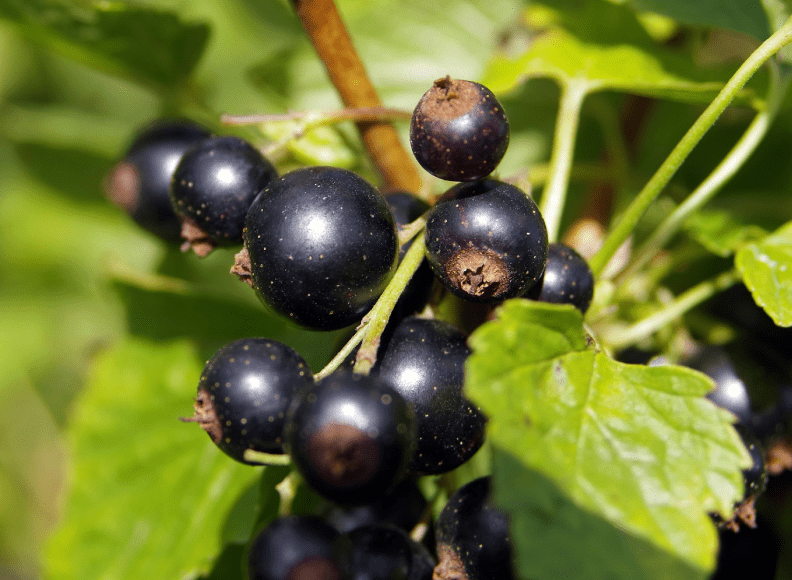
Blackcurrant oil
The blackcurrant, which is also known as cassis, has many healthy properties for our skin. The pulp is rich in vitamin C and minerals, but we will focus mainly on the seeds of this small plant, as they yield an oil that has incredible benefits for cosmetics. This slightly fruity smelling oil has similar properties to those of the raspberry and contains a lot of omega fatty acids. However, it differs in one component that makes this oil very precious, we are talking about stearidonic acid, which has four unsaturated bonds and therefore has greater benefits for our skin. This oil is highly cell renewing and helps to maintain the skin barrier and strengthen the skin. This oil is especially valuable and beneficial for mature and dry skin. Many exotic oils such as passion fruit, Brazil nut or shiso may have incredible properties and yet indigenous oils such as blackcurrant can surprise us time and time agai..
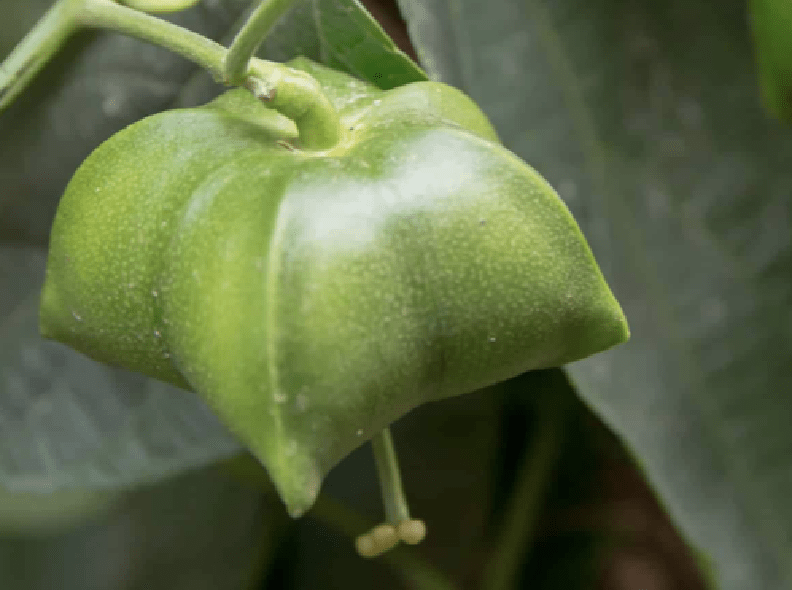

Sacha Inchi oil
The Inca peanut and the true value of Andean oil.
The oil of the Sacha Inchi fruit, which has a slightly tart smell and can be compared to the smell of freshly crushed leaves, is cultivated exclusively in the Peruvian Andes. This yellow-green oil is the active ingredient oil with the largest proportion of unsaturated fatty acids that has been discovered so far and is therefore a true treasure of nature. These unsaturated fatty acids are absorbed by the skin and lead to healthy and wrinkle-free skin. The fatty acids are important for cell renewal and thus prevent the formation of wrinkles and spots.
Due to its high content of tocopherols and omega acids, it has shown high effectiveness in anti-aging products and tightens the skin and protects it from drying out.
Feel the power of the Andes in your skin!
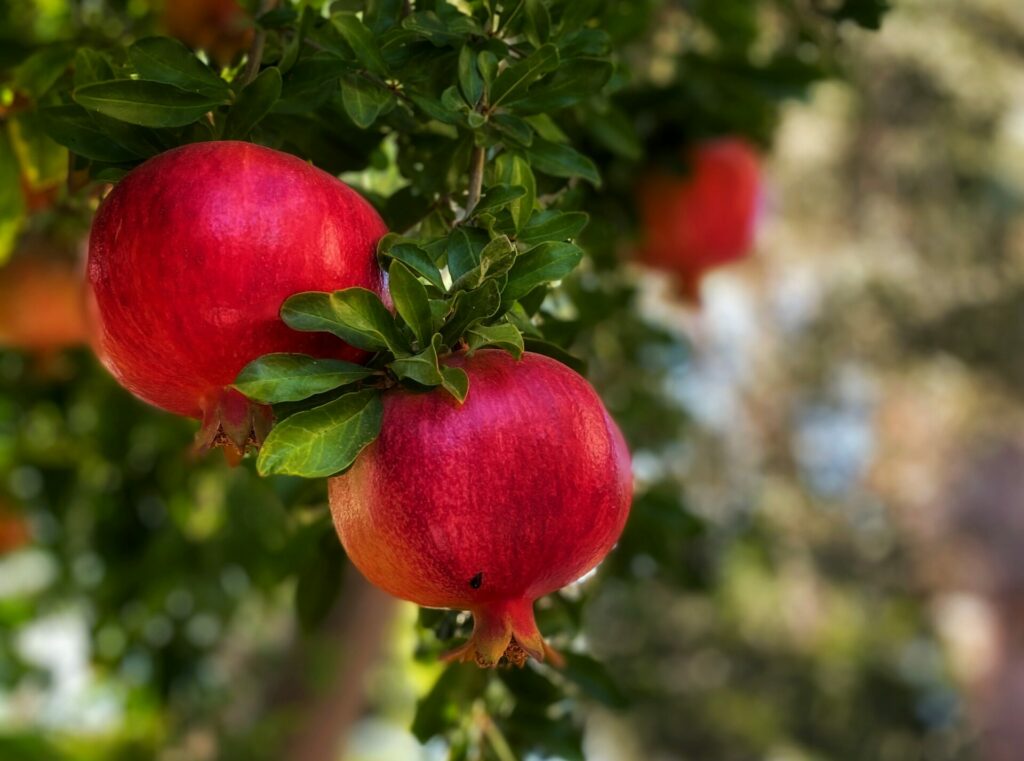

Pomegranate seed oil
Widely distributed in the Mediterranean region, the pomegranate is a fascinating fruit. The bright red fruit contains many small red seeds the size of peas. These seeds are covered by a light red pulp and are very rich in vitamins and minerals. The oil extracted from the seeds is very special and is distinguished from all other oils by a special composition. Pomegranate seed oil contains bisaccharides that are not found in almost any other oil. However, this is not in small quantities like many other exotic fatty acids, but in 70% of the total. This fatty acid has incredible properties for the skin, helping to regenerate it and thus preventing wrinkles. In addition to this special fatty acid, the oil also contains a valuable phytohormone as well as flavonoids, polyphenols and phytosterols. These substances have a very therapeutic effect on the skin and show crazy effects on the skin, giving it a lot of vitality. Pomegranate seed oil is one of the most valuable oils to help mask wrinkles and prevent further wrinkles, especially in mature skin.
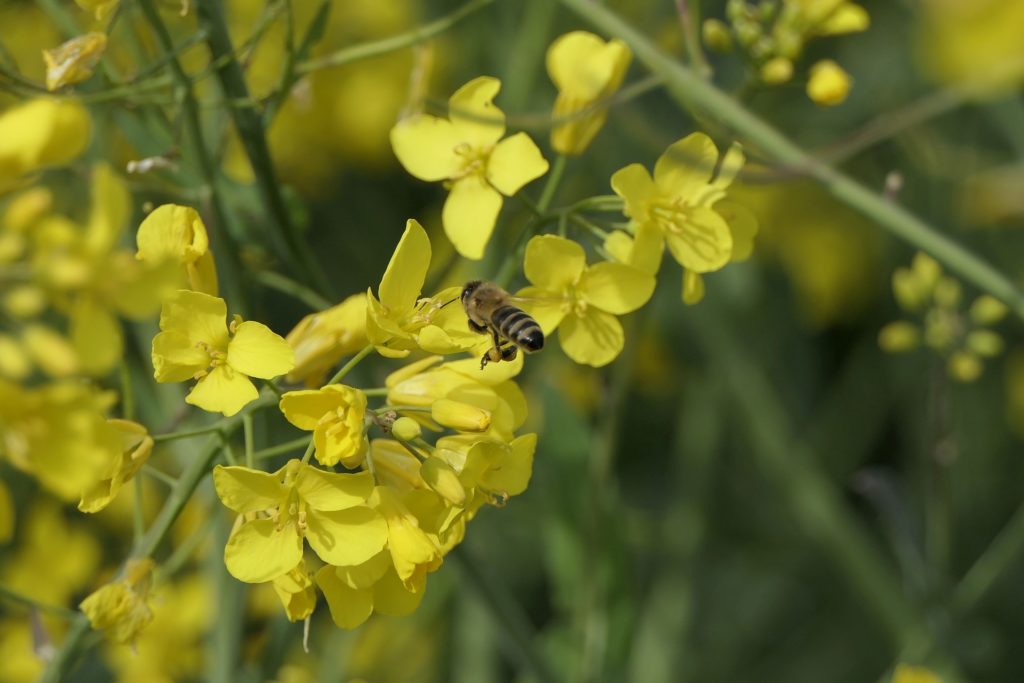

Rapeseed oil
The rape plant, which is widespread in Europe, provides a beautiful panorama from time to time with its pale yellow colour. Rapeseed is widely cultivated in Europe for its oil, but also as animal feed. This plant belongs to the cruciferous family and forms small black seeds. Native rapeseed oil is extracted from these seeds by cold pressing. This oil has a slightly nutty smell and is often used as food. However, it is also popular in cosmetics because it has a high proportion of unsaturated fatty acids and is also not very expensive.
But because of its low price, rapeseed oil is not necessarily of less benefit to the skin than other oils. Rapeseed oil contains a lot of omega fatty acids as well as vitamins and lecithins. The vitamin E and provitamin A help to bind free radicals and thus prevent cell damage. The lecithins provide good moisturising for the skin and ensure that the rapeseed oil has a refatting effect. But the most crucial ingredient is sinapic acid and its derivatives. This ester helps the rape plant to protect itself from UV radiation. This ingredient is also contained in the oil and thus helps to protect the skin from harmful radiation.

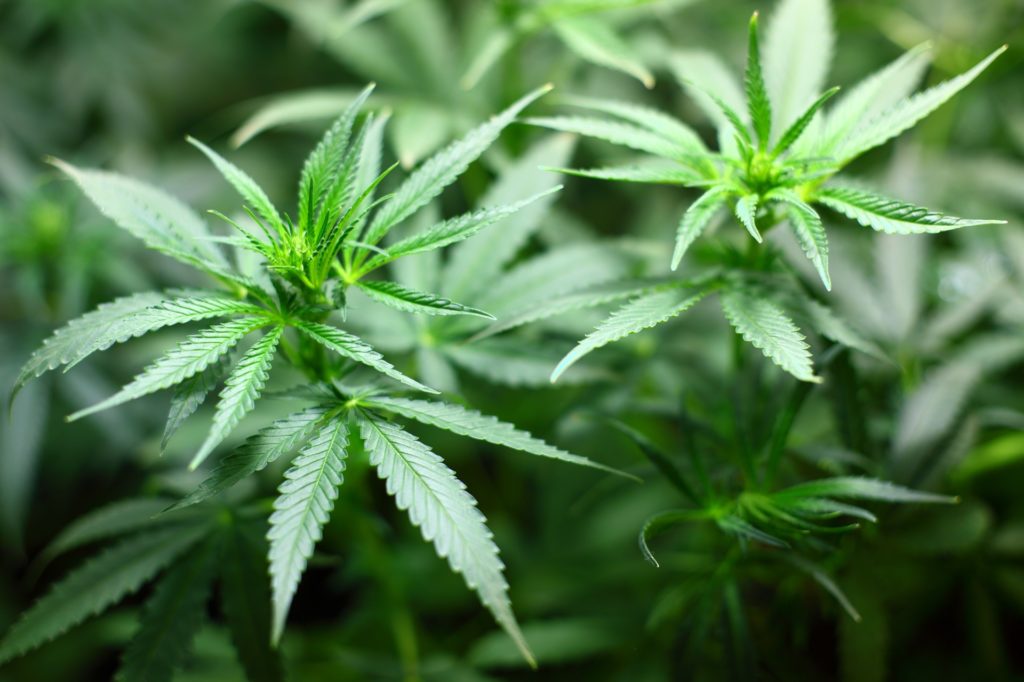
Hempseed oil
The hemp plant has always been an important crop for humans. The hemp plant was used as food, medicine and for natural fibres. However, these were replaced by cotton and are no longer often used today. Another factor is the THC content. This organic intoxicant caused the plant to be banned. At the moment, however, the hemp plant is experiencing a rebirth and hemp products are becoming more and more popular. In cosmetics, this is also understandable, as the oil extracted from the light-coloured seed. The hemp oil extracted from the pale seed has incredible benefits for the skin. More than three quarters of hemp oil contains polyunsaturated fatty acids. This is of great advantage and it can be combined with oils rich in oleic acid, such as argan or hazelnut, to cover a complete fatty acid spectrum. Hemp oil is suitable for all skin types and helps the skin to renew and revitalise itself.
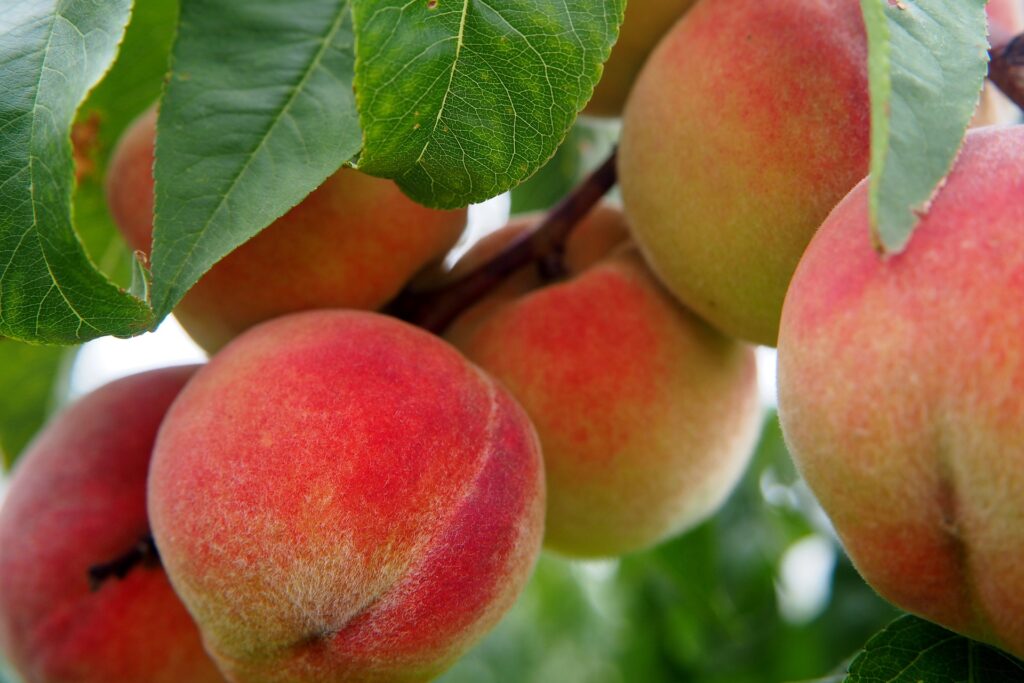

Peach seed oil
Like the plum and apricot, the peach belongs to the rose family. Just as with these fruits, peach kernel oil is extracted from the kernels of the peach. The peach came to Europe about a millennium ago and has since become widespread in the Mediterranean region.
The peach kernel oil is rich in oleic acid and is therefore very mild for the skin and nourishes the skin softly without leaving the skin greasy. The oil helps to smooth, moisturise and give elasticity to the skin. The peach kernel oil is optimal for dry and mature skin, as it helps them exactly in their needs. However, the oil can also be used for any other skin type to give a little extra love.
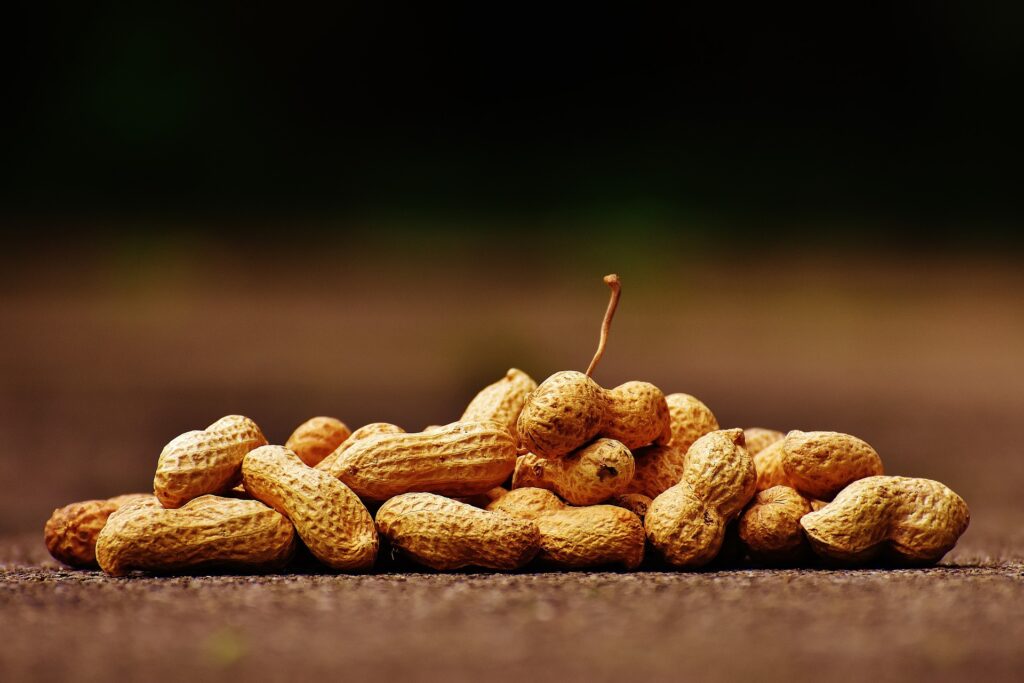
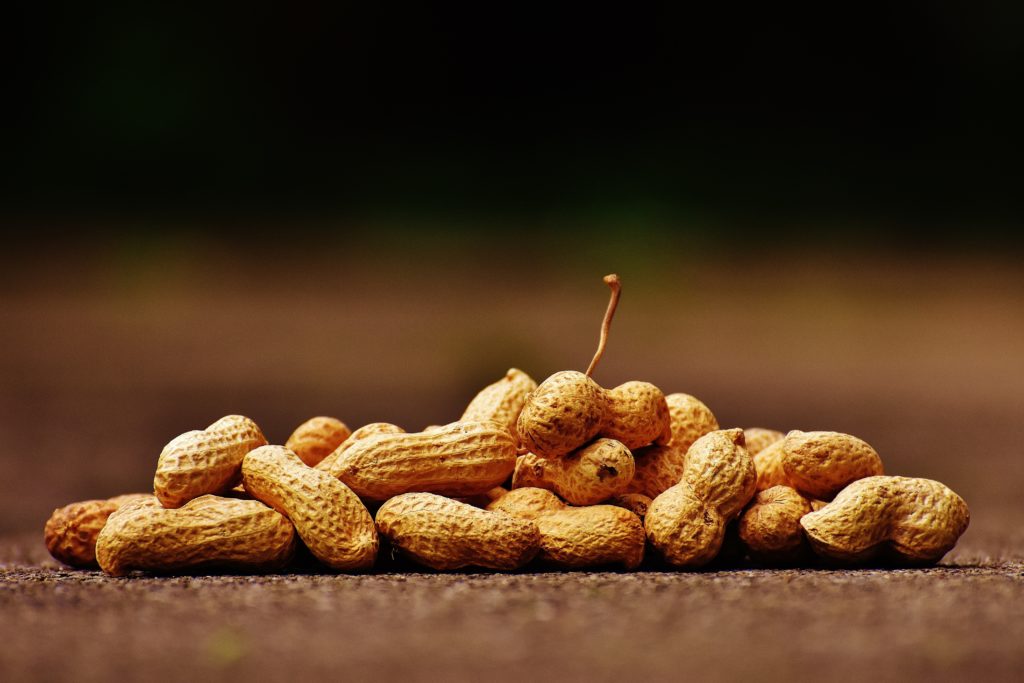
Peanut oil
Originally from South America, the peanut is botanically not a nut at all, but a legume like peas or lentils. Nowadays, the peanut is found in many foods, but it also causes some problems, as some peanut proteins can trigger strong allergies. Allergy sufferers should therefore always make sure that the products do not contain any allergens that are dangerous for them.
In cosmetics, there are two types of peanut oil, one is native and the other is refined. One oil is full of properties and the other is just ineffective fatty acids. At NatureCastle we always look to have as many active ingredients as possible in our products, so we only need virgin peanut oil. Virgin peanut oil contains a lot of vitamin E, which slows down cell ageing. In addition to vitamin E, vitamins K, B1 and D are also found in the oil. The oil nourishes the skin deep down and is therefore also a blessing for horny skin areas.

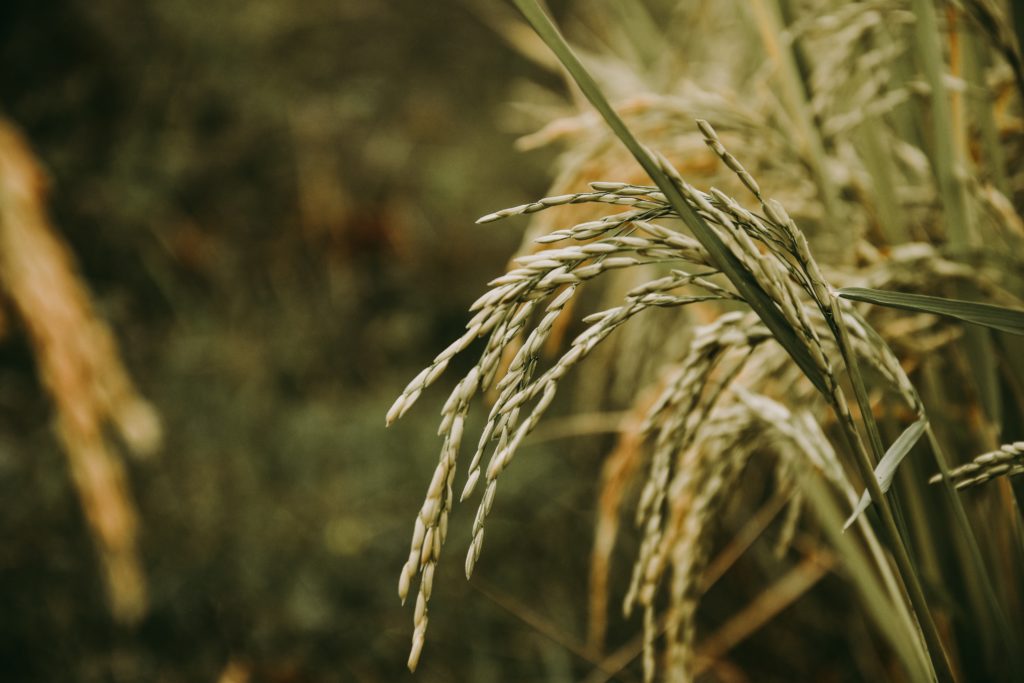
Rice germ oil
Originating in South Asia, rice is one of the oldest cultivated plants. It is also one of the most consumed foodstuffs in the world. Today it is cultivated mainly in Asia, but also in Africa, South America and parts of Spain and the Po region. The oil is extracted from the bran of the rice, which contains up to one third of the valuable oil. This bran is very rich in vitamins and minerals. Unfortunately, the enzymes also contained in it quickly decompose the oil, and extraction must be quick to ensure good quality.
The oil is often used in cosmetics because it gives the cosmetic products a pleasant skin feeling and it is not very greasy. Besides that, it is very stable to oxidation and makes the products last longer. The γ-oryzanol contained in rice germ oil is a very effective molecule that absorbs solar radiation and provides natural sun protection.
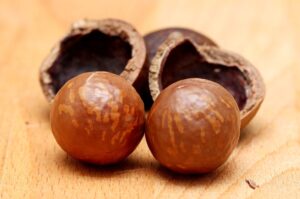
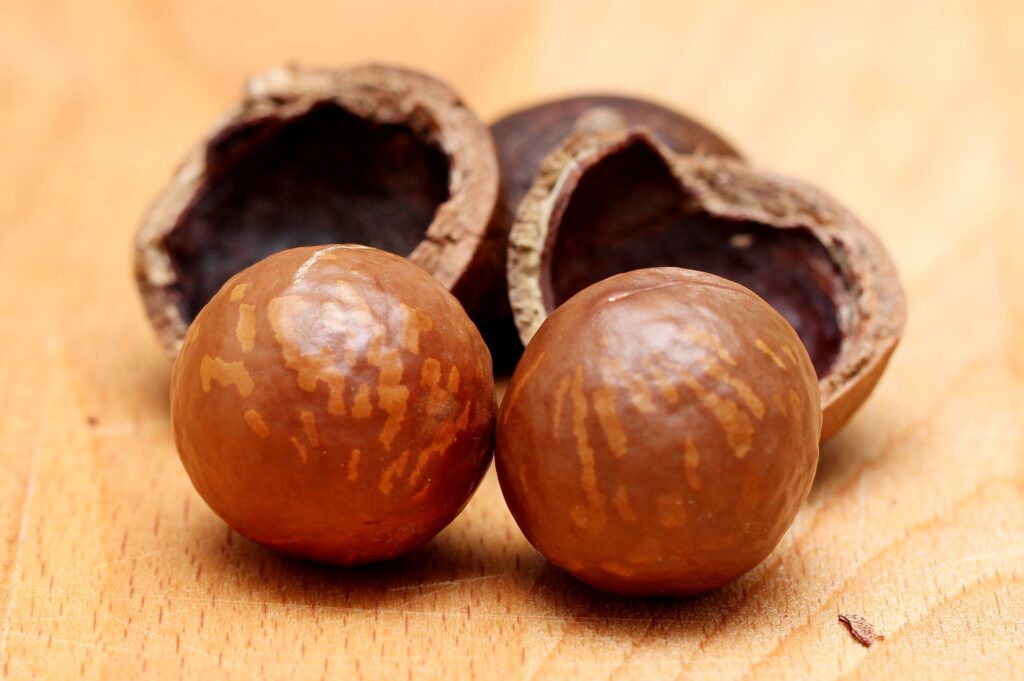
Macadamia oil
The macadamia nut is a highly sought-after nut and originally comes from Australia. However, the macadamia plant can nowadays be found almost everywhere in the Pacific region. The macadamia nut contains up to 70% of oil, which can be extracted by cold pressing. The oil is very special in its composition and resembles animal fats more than other vegetable fats. The reason for this is that one fifth of it consists of palmitoleic acid. This fatty acid is more commonly found in animal fats such as each of the mink. This is why this oil is often used as a vegan alternative.
Macadamia oil is very nourishing and similar to human skin oil, which means it is quickly absorbed into the skin. It regulates the skin and also regenerates it. Due to its low viscosity, the oil has a pleasant consistency in products where the oil is often used.
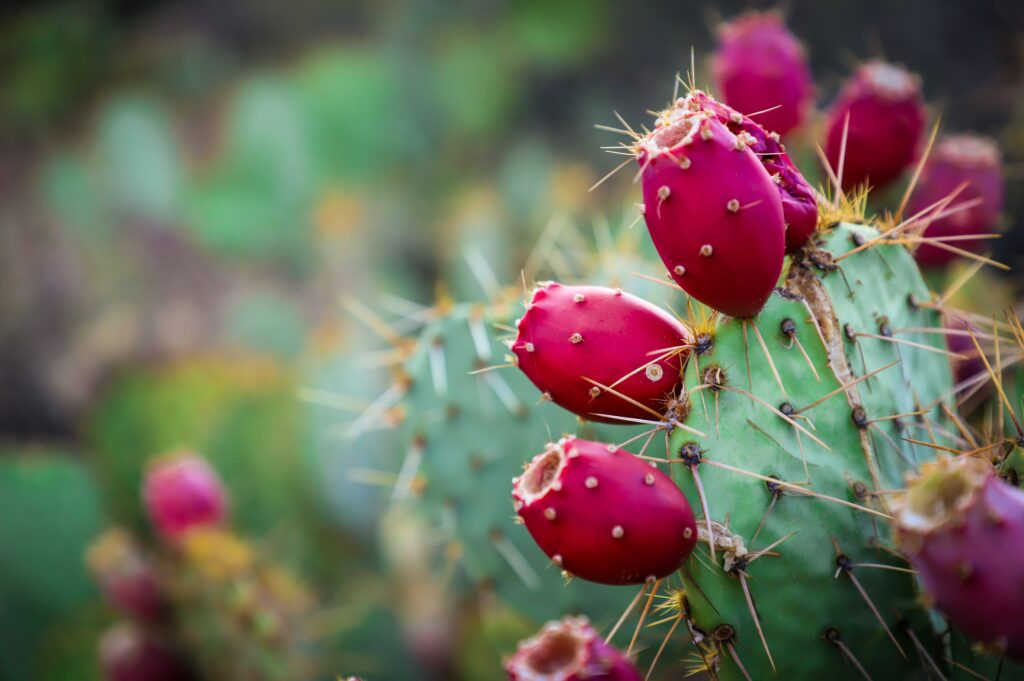

Prickly pear oil
Prickly pear oil is one of the most expensive oils available. Prickly pear oil is extracted from the light-coloured seeds of the prickly pear. This species of cactus grows widely in the Mediterranean region, but the oil is mostly produced in Morocco. The reason for the incredibly high price of this oil is the extraction and processing of the fruit. Harvesting prickly pears is very laborious work, as the figs and the whole plant, like all other cactus varieties, have a lot of thorns. In addition, the figs of the Opuntia cactus contain only a few seeds and these, besides being very small, have almost no oil. Thus, one ton of figs is needed for one litre of oil, which are processed by hand from the harvest to the pressing process.
The cold-pressed prickly pear oil is a real luxury for the skin and is considered the new howling agent in the anti-aging industry. The oil is rich in omega fatty acids and many vitamins and minerals. The oil helps to protect the skin from the sun and to stop cell ageing. It is even said to prevent skin cancer and protect the skin from oxidative stress.
The prickly pear oil is expensive with its high price, but the effects certainly pay off.
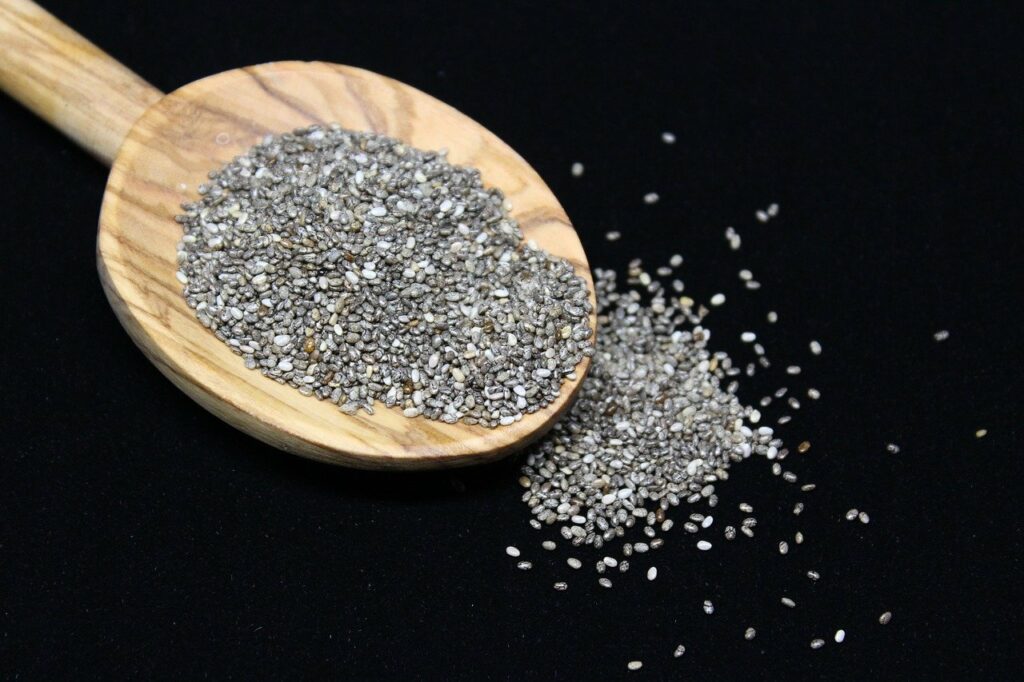

Chia seed oil
Chia seeds, which have been considered a superfood in Europe for a few years, have been consumed in South America for many hundreds of years. The small spotted seeds of the annual chia plant, which belongs to the sage family, were very revered in Inca culture. This is not without reason, because the small seeds, which can even be grown here today, are full of protein and chia seed oil.
The chia seed oil is mainly obtained by cold pressing as well as by CO2 extraction. The oil has a higher composition of α-linolenic acid than linseed oil, for example. The chia seed oil at great benefits for the skin and helps to regenerate and moisturise the skin.
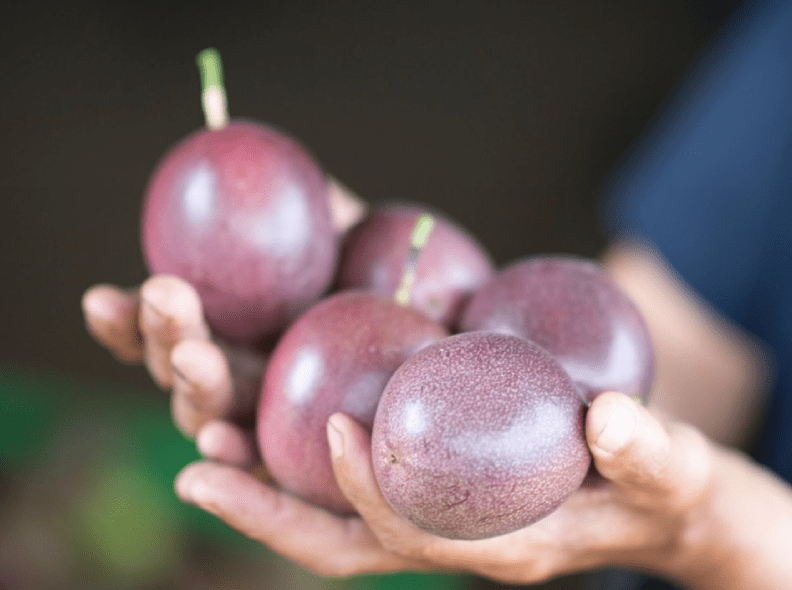

Passionfruit Seed Oil
From the black seeds of the passion fruit, native to South America, an oil with a wonderful tropical scent is extracted that is of incredible value for our skin. It regenerates and nourishes our skin, making it vibrant and rejuvenated. This oil consists of up to 80% linoleic acid and is rich in minerals which, thanks to its composition, help to promote cell renewal and the formation of new, strong skin cells. Passion fruit seed oil is the richest source of passion flower, an active ingredient that relaxes and soothes the skin. This South American magic oil not only smells wonderful and is excellent for skin care, but is also one of the most sustainable ingredients that can be used in cosmetics.
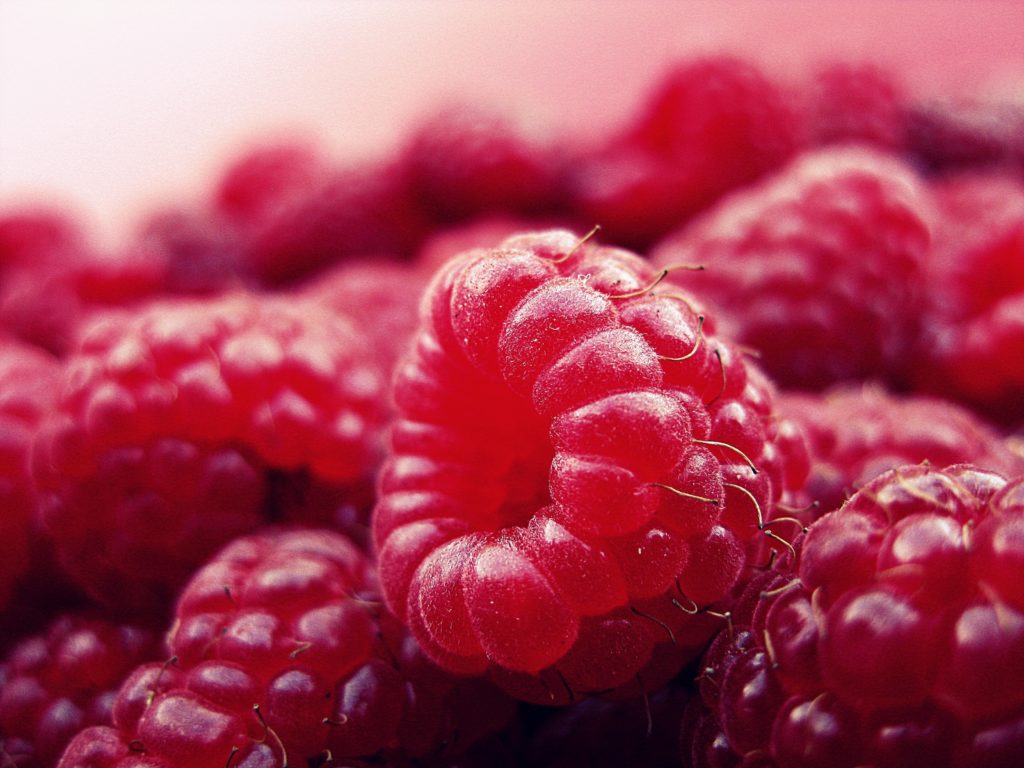
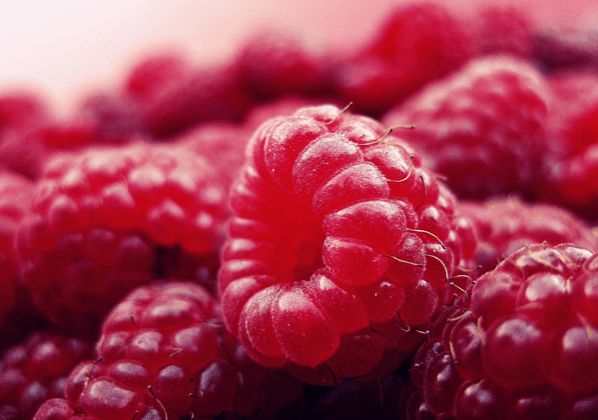
Raspberry seed oil
Botanically speaking, the raspberry is a collective fruit, which means that each segment is a fruit in itself. Each of these segments contains a small seed. From this seed, the light yellow oil is extracted by CO2. This oil is highly sought after in cosmetics, as this oil has strong anti-aging properties and can therefore be found in many products. The reason for these properties can be explained by the structure of this oil. The effect is made possible by the fatty acids and trace elements contained, which distinguish raspberry seed oil from many others. The oil contains omega 3, omega 9 and other unsaturated fatty acids, which are good for the skin and prevent it from drying out, becoming irritated or inflamed. Besides the fatty acids, this oil contains many vitamins and minerals that help the skin to build collagen and renew the cells. This oil is a true gift of nature and its properties can prevent cell ageing and skin impurities and will keep your skin looking healthy and young.
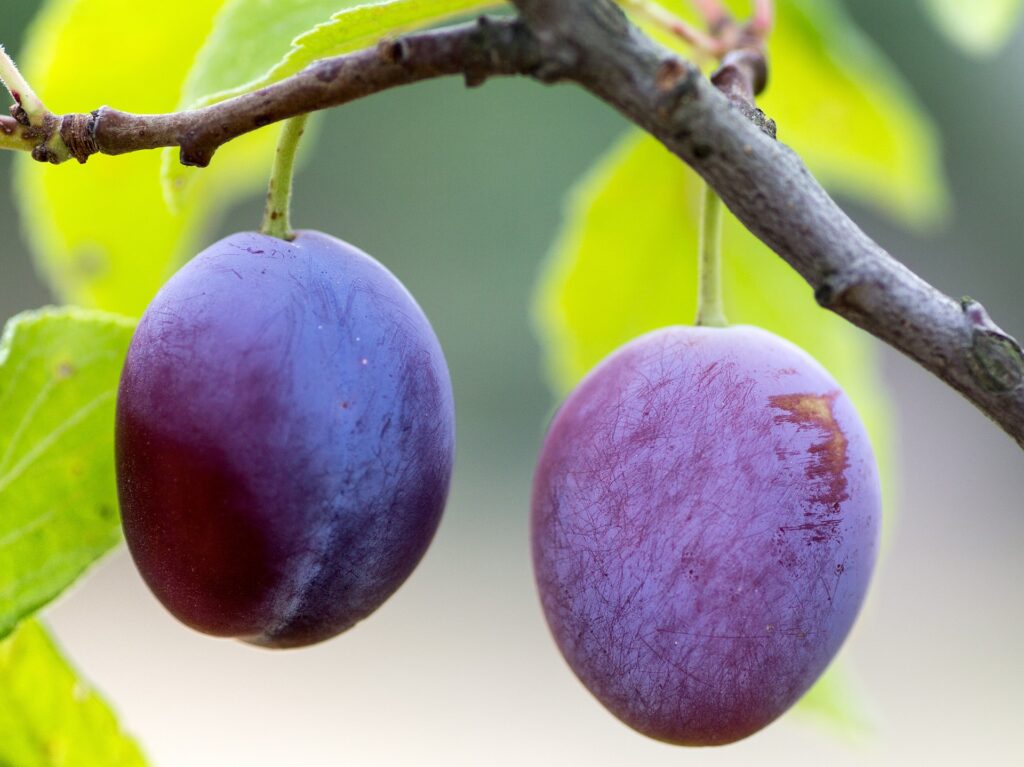

Plum seed oil
The oil of the plum has been used for thousands of years for skin care and has incredible properties. The plum originated in Japan, although today most plums are grown in France. The Japanese emperors had plum orchards built to honour this incredible fruit and to benefit from its powers.
The oil, which is extracted from the seeds of the plum, is slightly yellow and has a light marzipan-like smell. The oil is rich in the unsaturated oleic acid and is quickly absorbed into the skin. In addition to the unsaturated fatty acid, this oil contains a relatively high amount of vitamin E and is therefore very stabilising and helps to protect the skin from oxidation, which can be caused by UV rays, for example.
The oil is suitable for all skin types and ensures soft and healthy skin.
Let yourself be enveloped by the light nutty fragrance and pampered by the power of this oil.
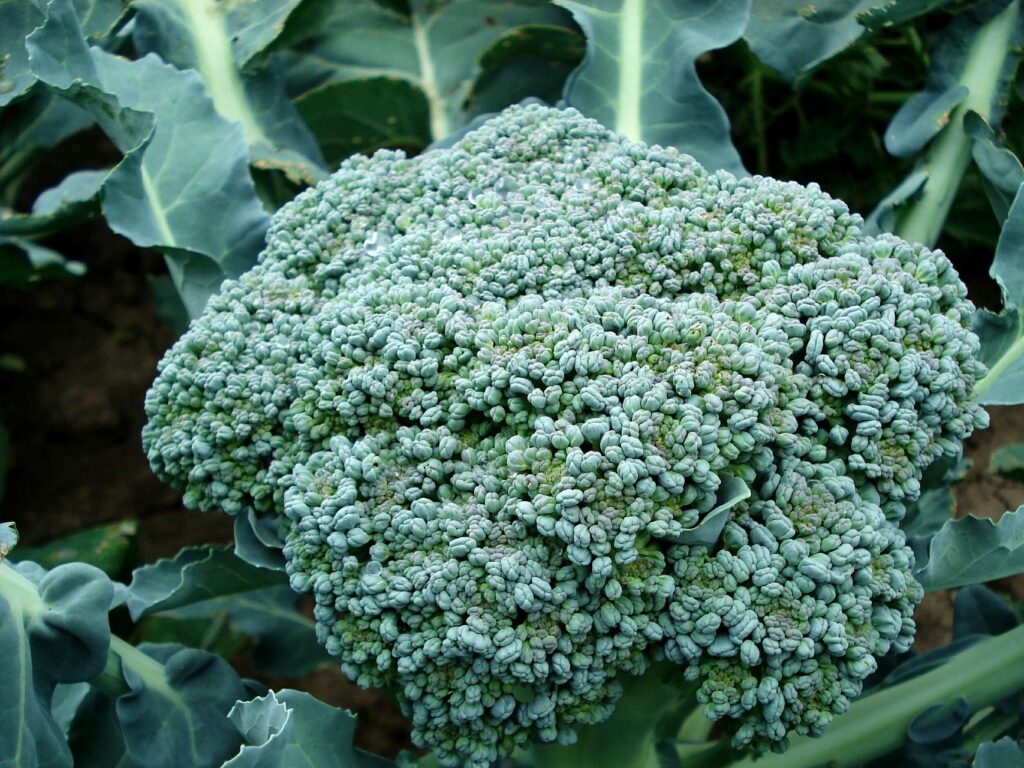
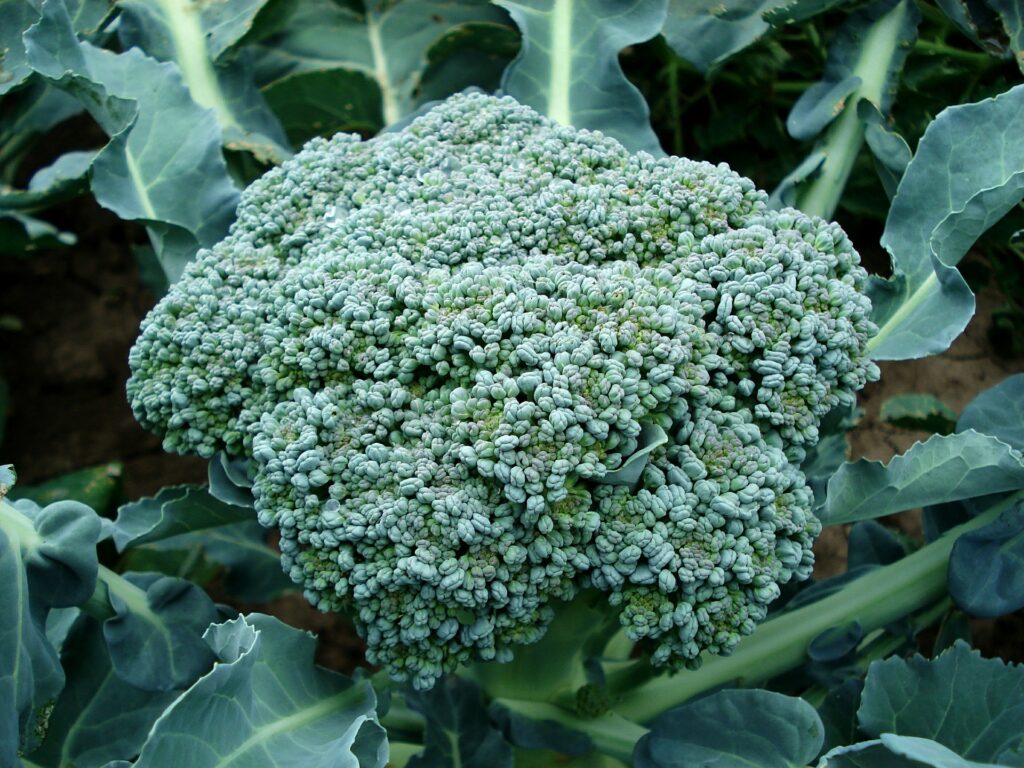
Broccoli seed oil
The oil cold-pressed from the black seeds of broccoli is available from light yellow to light green. The oil of the broccoli plant has recently had a real boom in skin and hair cosmetics. Broccoli is widely grown in Europe but its oil is less known to many.
Broccoli oil is very special in its fatty acid spectrum and contains two unique fatty acids, erucic acid and gadoleic acid. These fatty acids are less suitable for food because they are harmful for internal use. In cosmetics, however, they have a very good effect because they are a natural substitute for silicone oils. These two acids make it easier to comb the hair and keep the skin supple. A very special oil with truly perfect properties for highly effective natural cosmetics.
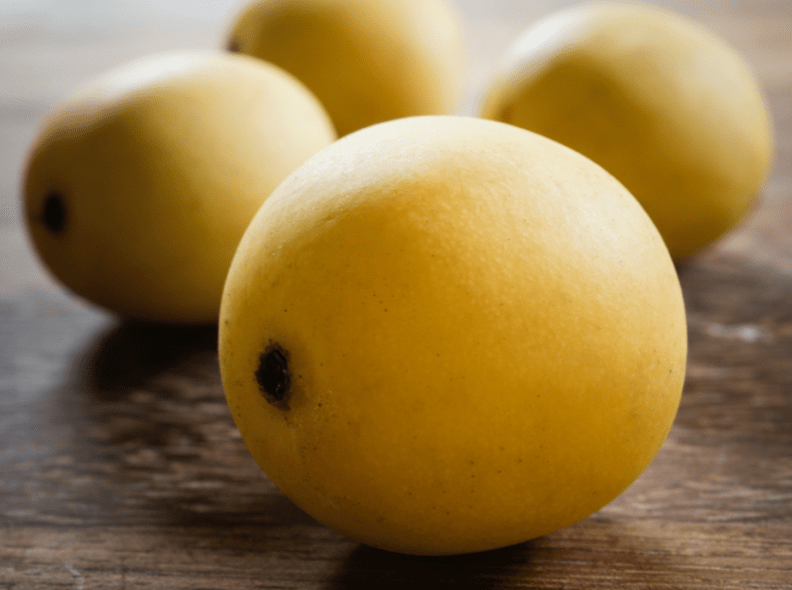

Marula oil
The marula fruit, which comes from Africa, is rich in vitamins and minerals but also in fructose. This is converted into alcohol when the fruit is overripe and is then eaten by a variety of animals. The marula tree is therefore also known as elephant liquor. The distribution area of the marula tree stretches from the Sahara belt to South Africa. In Zulu culture (South Africa), this oil is revered as a sign of fertility and femininity. When girls are born, it is used as a gift to welcome them into the world.
Marula oil, extracted from the seeds of the marula fruit, is rich in oleic acid and, thanks to its high antioxidant content, has the property of stabilising other oils and fats. As a result, it contributes to a longer cosmetic life. Its beneficial properties have been known for centuries, but its composition is far from 100%.
A true gift of nature for the well-being of all, especially for women.

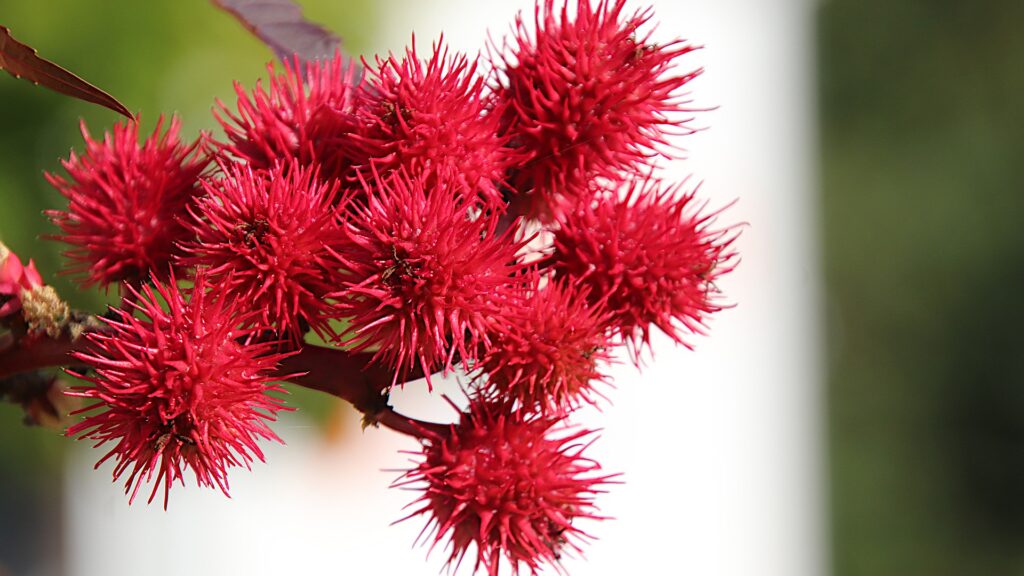
Castor oil
The castor plant, which originates from India, is known for its bright red fruits and the spotted seeds they contain. The very viscous castor oil is extracted from these seeds. Compared to the rest of the plant, the oil does not contain the toxic protein ricin, and is therefore harmless to the human body.
Most of the oil contains ricinoleic acid. This fatty acid helps the skin to regenerate and, in combination with all the other fatty acids in the oil, strengthens the skin barrier. The oil is thick and, depending on the harvest, may have a slight typical odour and a light yellow colour. Mostly, however, the castor oil is transparent and completely odourless.
Castor oil is suitable for all skin types but specifically cares for mature skin. This oil helps to bind free radicals and promote collagen production in the skin, thus stopping skin cell ageing and reducing wrinkles. Likewise, ricinoleic acid reduces the proliferation of bacteria and thus prevents acne.
Castor oil is a true gift of nature, which is not only for the skin, but also works wonders for hair.
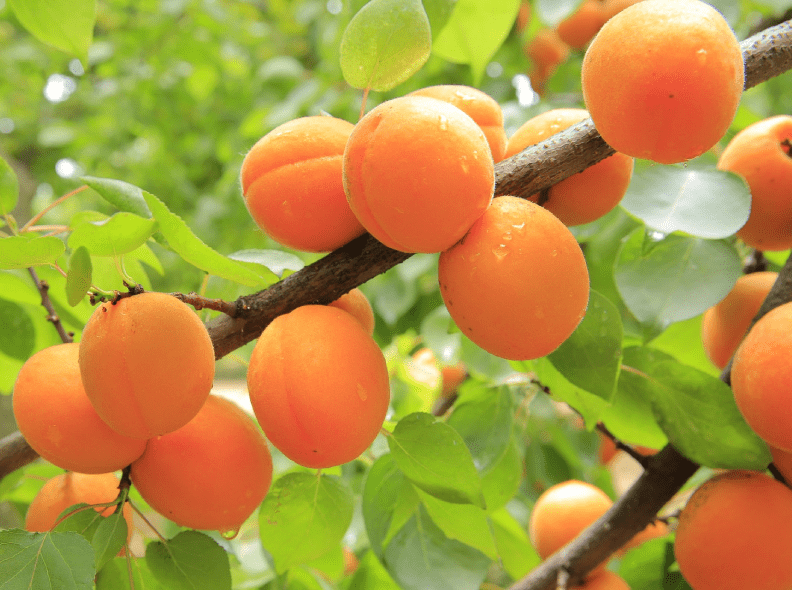
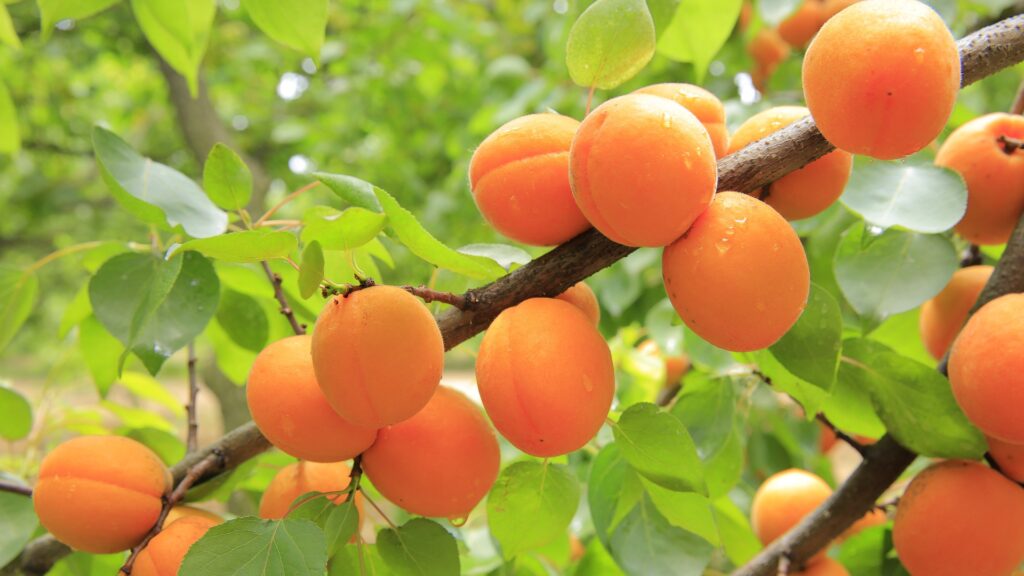
Aprikosenkernöl
Originally from China, the apricot is now widespread in Europe and also very much in demand. The orange-coloured fruit can be harvested and used in early summer. But the fruit itself is of no further importance in cosmetics, despite its wonderful benefits. The secret lies in the kernel, which is similar to the almond. Almost half of the kernel of the apricot consists of the valuable apricot kernel oil.
The apricot kernel oil smells like marzipan due to its high content of amygdalin. In addition to the high content of amygdalin, apricot kernel oil contains a lot of oleic acid. The oil is very similar to almond oil and, like almond oil, is absorbed very quickly into the skin. Apricot kernel oil is suitable for all skin types and can even be used as a base oil in baby cosmetics.
The biggest difference to almond oil is that apricot kernel oil has a very high content of pangamic acid. This acid is also better known as vitamin B15. According to some studies, this vitamin supplies the cells with oxygen and supports some very important cellular processes.

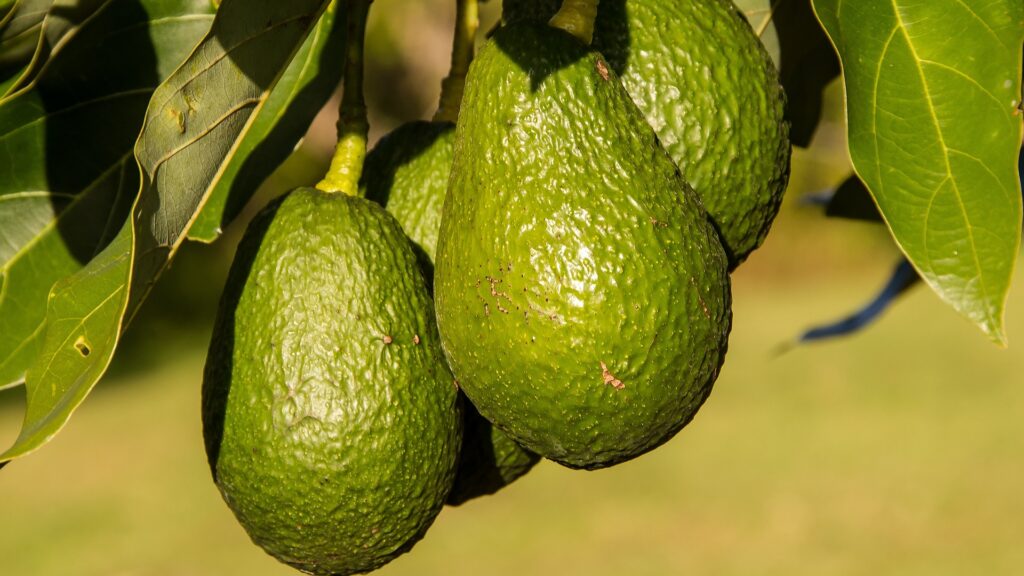
Avocado oil
The avocado is surprisingly a fruit for many people. Originally from Mexico, the avocado is now eaten all over the world. The oil of the avocado is not extracted from the pit, as is the case with many others, but directly from the flesh of the fruit. The proportion of unsaponifiable components, i.e. substances that are not fatty acids, in this oil is exceptionally high. These are mainly lecithins and fat-soluble vitamins such as A, E and D. The fatty acid spectrum of avocado oil is very broad, but consists mainly of oleic acid and a large proportion of palmitoleic acid.
Avocado oil is very well tolerated by the skin and helps with dry and inflamed skin. In doing so, the oil can regenerate the skin barrier and heal sick skin conditions such as neurodermatitis or burns.
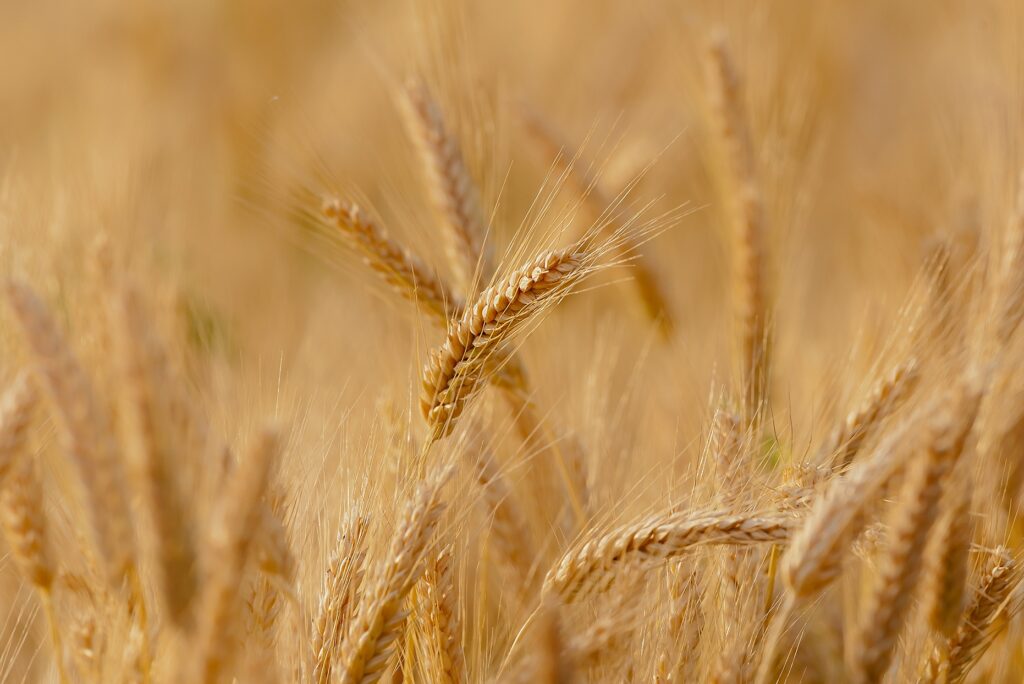

Wheat germ oil
The second most cultivated food in the world originally comes from Persia, today’s Iran. In addition to food production, it is also used to produce an excellent skin care oil; we are talking about wheat germ oil.
The grain, which after maize and rice is one of the most important food sources of mankind, contains a deep yellow oil in its germ, which is rich in unsaturated fatty acids and minerals; we are talking about wheat germ oil.
This oil is the oil with the highest content of tocopherols, especially α-tocopherol. The tocopherols, which are also summarised under the collective term vitamin E, have antioxidant properties and lead to oxidation stability of the cosmetics. Another important advantage of this α-tocopherol is its ability to neutralise free radicals and therefore lead to better skin health.
Sometimes true treasures are hidden in such simple ingredients as wheat.
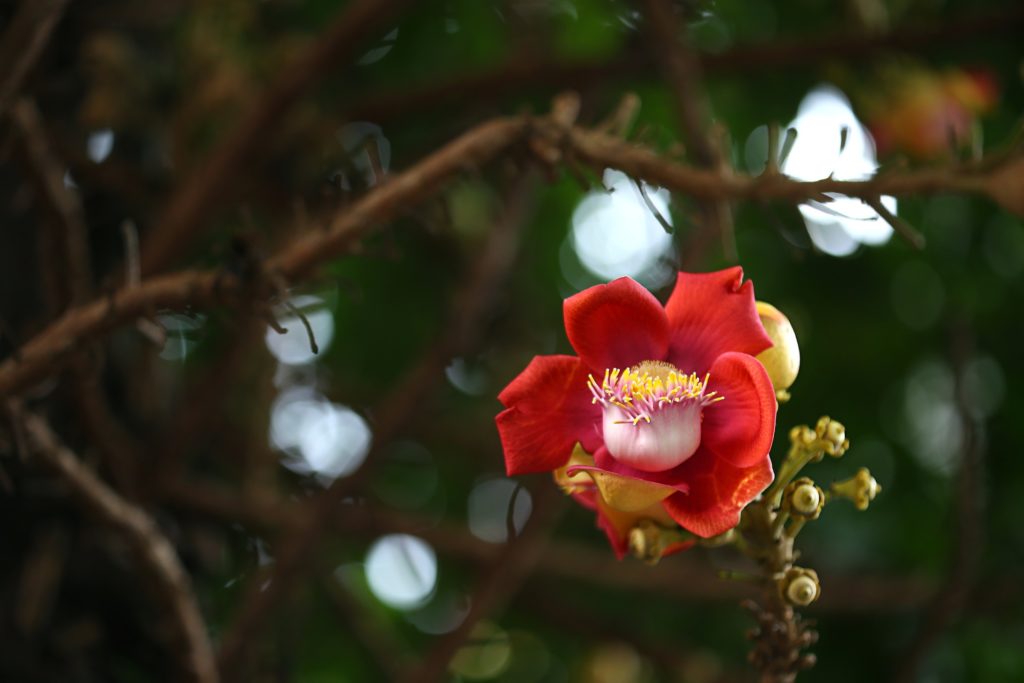

Brazil nut oil
Originating from the Amazon rainforest, the Brazil nut is a tree that can grow up to 60 metres high and only occurs wild in nature. The reason that this tree can only live wild and is not cultivated by humans in plantations is due to the fact that there is a special wild bee species that is the only one capable of pollinating the fruits of the Brazil nut.
The oil extracted from the Brazil nut is rich in unsaturated fatty acids and minerals, including selenium, potassium and calcium, and a variety of vitamins such as vitamin E and B1.
Thanks to its good antioxidant abilities, this oil is also often used in anti-ageing products. It nourishes the skin and gives it a wonderful young radiance.
Truly a real cosmetic booster!
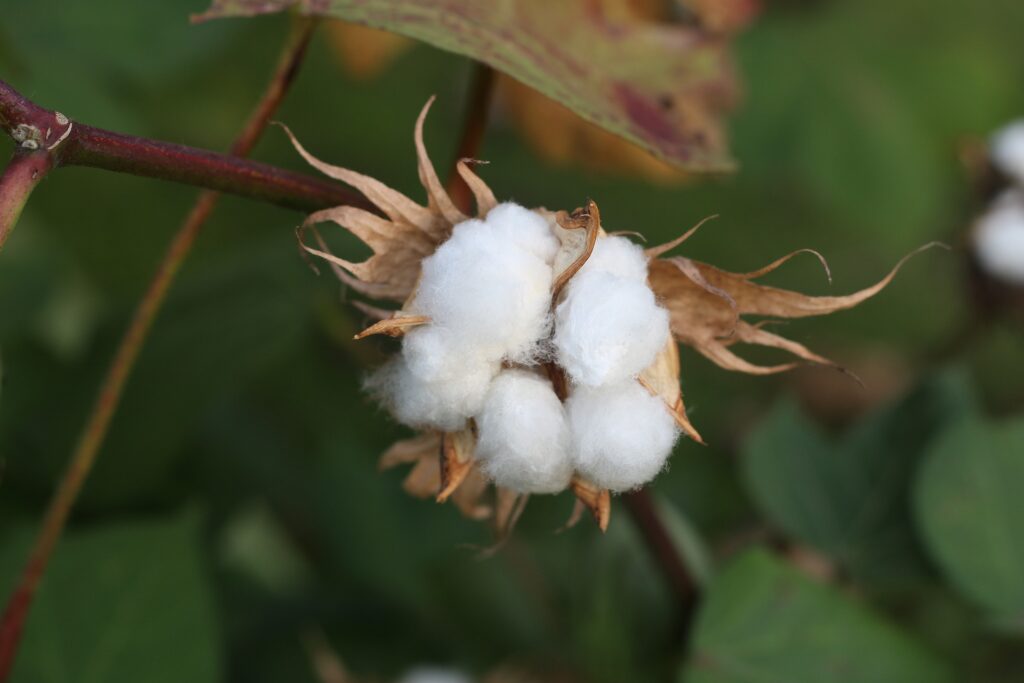
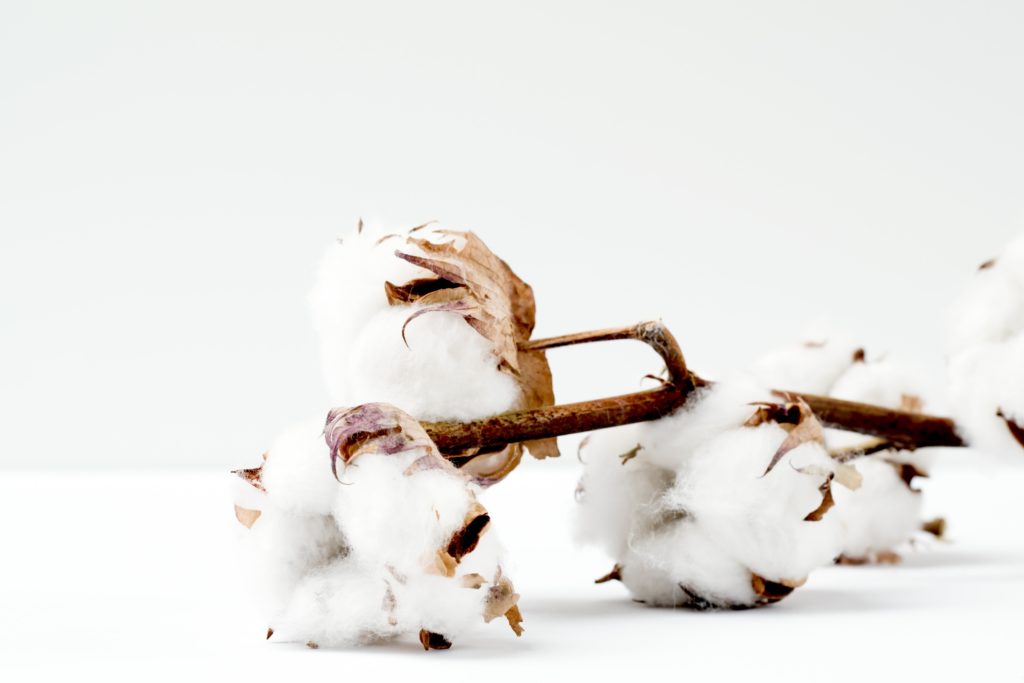
Cotton seed oil
Cottonseed oil, which is brown in its raw state and very viscous, is extracted from the hulled seeds of the cotton. The oil is mainly produced in China, the USA and Brazil. It is very cheap and is often used as a base oil in cosmetics.
Half of the cottonseed oil consists of linoleic acid and one fifth of oleic acid. The oil has a high content of tocopherols, which make the oil very stable to oxidation and therefore stabilises other oils. The oil is suitable for all skin types and helps the skin to strengthen and not lose moisture, which can be especially beneficial in winter months.
Haut optimal pflegen
Kosmetik? Ach komm, das ist doch «künstlich, unecht und unnatürlich» Warum benutzt sie dann der eine mehr, der andere weniger und manche gar nicht? Der Mensch hat es doch irgendwie geschafft «ohne» zu überleben. Wie kann es also sein, dass damals nichts vermisst wurde? Ging es denen im Gegensatz zu uns heute schlecht oder interpretieren wir etwas falsch? Natürlich hat die Wissenschaft die letzten Jahre riesige Fortschritte gemacht – keine Frage. Heute sind medizinisch Dinge möglich, die noch vor 20 Jahren als undenkbar galten. Aber hier geht es nicht um eine lebensrettende Herztransplantation, sondern um etwas so Offensichtliches wie die Aber hier geht es nicht um eine lebensrettende Herztransplantation,
Kosmetik? Ach komm, das ist doch «künstlich, unecht und unnatürlich» Warum benutzt sie dann der eine mehr, der andere weniger und manche gar nicht? Der Mensch hat es doch irgendwie geschafft «ohne» zu überleben. Wie kann es also sein, dass damals nichts vermisst wurde? Ging es denen im Gegensatz zu uns heute schlecht oder interpretieren wir etwas falsch? Natürlich hat die Wissenschaft die letzten Jahre riesige Fortschritte gemacht – keine Frage. Heute sind medizinisch Dinge möglich, die noch vor 20 Jahren als undenkbar galten. Aber hier geht es nicht um eine lebensrettende Herztransplantation, sondern um etwas so Offensichtliches wie die Aber hier geht es nicht um eine lebensrettende Herztransplantation,
Kosmetik? Ach komm, das ist doch «künstlich, unecht und unnatürlich» Warum benutzt sie dann der eine mehr, der andere weniger und manche gar nicht? Der Mensch hat es doch irgendwie geschafft «ohne» zu überleben. Wie kann es also sein, dass damals nichts vermisst wurde? Ging es denen im Gegensatz zu uns heute schlecht oder interpretieren wir etwas falsch? Natürlich hat die Wissenschaft die letzten Jahre riesige Fortschritte gemacht – keine Frage. Heute sind medizinisch Dinge möglich, die noch vor 20 Jahren als undenkbar galten. Aber hier geht es nicht um eine lebensrettende Herztransplantation, sondern um etwas so Offensichtliches wie die Aber hier geht es nicht um eine lebensrettende Herztransplantation,
Kosmetik? Ach komm, das ist doch «künstlich, unecht und unnatürlich» Warum benutzt sie dann der eine mehr, der andere weniger und manche gar nicht? Der Mensch hat es doch irgendwie geschafft «ohne» zu überleben. Wie kann es also sein, dass damals nichts vermisst wurde? Ging es denen im Gegensatz zu uns heute schlecht oder interpretieren wir etwas falsch? Natürlich hat die Wissenschaft die letzten Jahre riesige Fortschritte gemacht – keine Frage. Heute sind medizinisch Dinge möglich, die noch vor 20 Jahren als undenkbar galten. Aber hier geht es nicht um eine lebensrettende Herztransplantation, sondern um etwas so Offensichtliches wie die Aber hier geht es nicht um eine lebensrettende Herztransplantation,
Kosmetik? Ach komm, das ist doch «künstlich, unecht und unnatürlich» Warum benutzt sie dann der eine mehr, der andere weniger und manche gar nicht? Der Mensch hat es doch irgendwie geschafft «ohne» zu überleben. Wie kann es also sein, dass damals nichts vermisst wurde? Ging es denen im Gegensatz zu uns heute schlecht oder interpretieren wir etwas falsch? Natürlich hat die Wissenschaft die letzten Jahre riesige Fortschritte gemacht – keine Frage. Heute sind medizinisch Dinge möglich, die noch vor 20 Jahren als undenkbar galten. Aber hier geht es nicht um eine lebensrettende Herztransplantation, sondern um etwas so Offensichtliches wie die Aber hier geht es nicht um eine lebensrettende Herztransplantation,
Kosmetik? Ach komm, das ist doch «künstlich, unecht und unnatürlich» Warum benutzt sie dann der eine mehr, der andere weniger und manche gar nicht? Der Mensch hat es doch irgendwie geschafft «ohne» zu überleben. Wie kann es also sein, dass damals nichts vermisst wurde? Ging es denen im Gegensatz zu uns heute schlecht oder interpretieren wir etwas falsch? Natürlich hat die Wissenschaft die letzten Jahre riesige Fortschritte gemacht – keine Frage. Heute sind medizinisch Dinge möglich, die noch vor 20 Jahren als undenkbar galten. Aber hier geht es nicht um eine lebensrettende Herztransplantation, sondern um etwas so Offensichtliches wie die Aber hier geht es nicht um eine lebensrettende Herztransplantation,
Öle und Fette Öle und Fette Öle und Fette Öle und Fette Öle und Fette Öle und Fette Öle und Fette Öle und Fette Öle und Fette Öle und Fette Öle und Fette Öle und Fette Öle und Fette Öle und Fette Öle und Fette Öle und Fette Öle und Fette Öle und Fette
Öle und Fette Öle und Fette Öle und Fette Öle und Fette Öle und Fette Öle und Fette Öle und Fette Öle und Fette Öle und Fette Öle und Fette Öle und Fette Öle und Fette Öle und Fette Öle und Fette Öle und Fette Öle und Fette Öle und Fette Öle und Fette
Öle und Fette Öle und Fette Öle und Fette Öle und Fette Öle und Fette Öle und Fette Öle und Fette Öle und Fette Öle und Fette Öle und Fette Öle und Fette Öle und Fette Öle und Fette Öle und Fette Öle und Fette Öle und Fette Öle und Fette Öle und Fette

